We did it! Our urban yard in Edmonton, Alberta is officially a Certified Wildlife-Friendly Habitat recognized by the Canadian Wildlife Federation. What used to be a neat, quiet, city-bound patch of land is now alive – pulsing with birdsong, pollinators, and the subtle rhythms of a backyard reclaimed by life. This isn’t just a milestone – it’s a declaration: wildness belongs here, and we carved out space for it, unapologetically.
This is a story of digging, uprooting, planting, and daring to let life take over. There is a lot to share – the messy, joyful, exhilarating journey – so grab a cup of coffee, lean in, and dive headfirst.
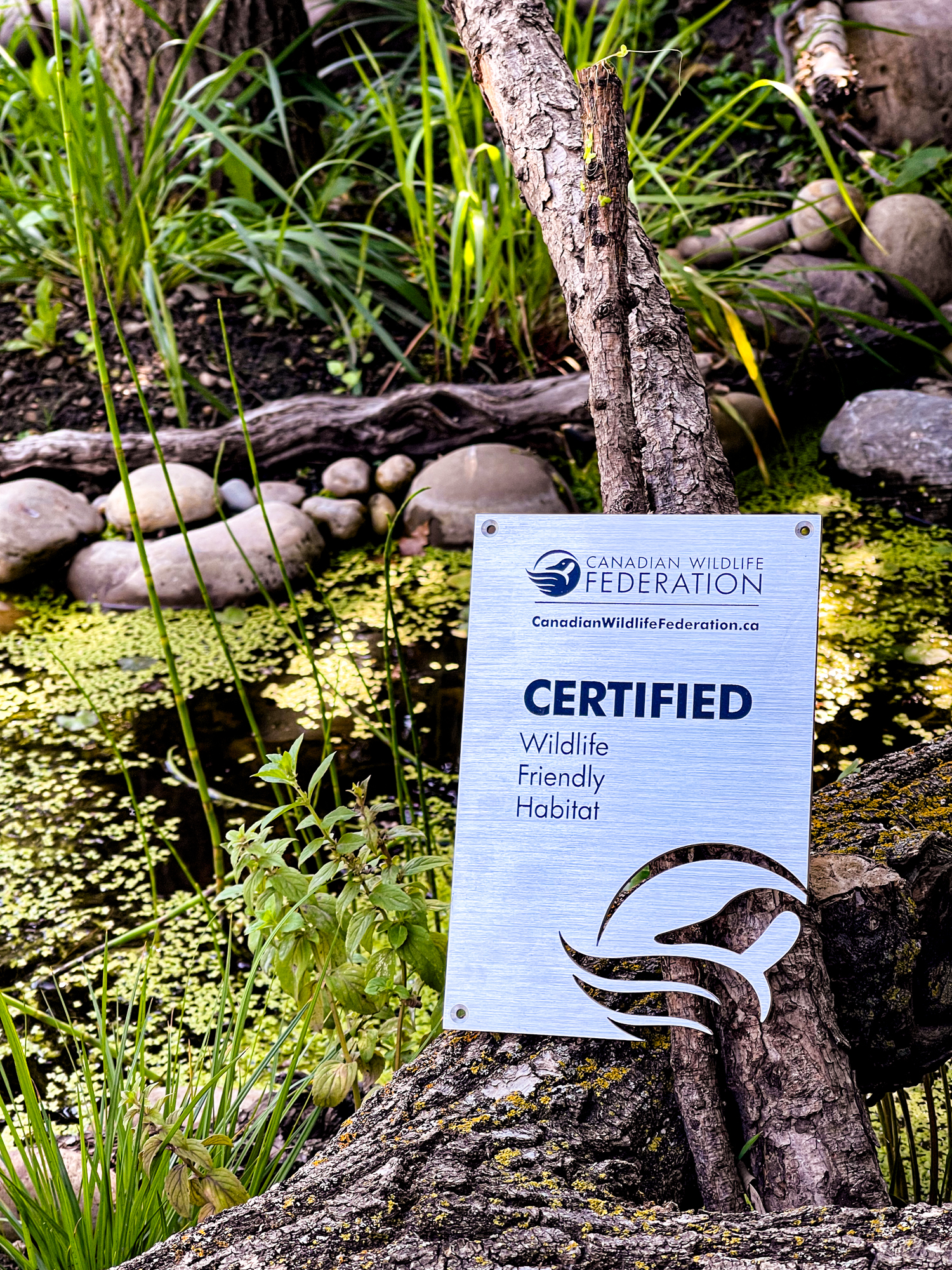
In this post, you’ll find:
(click a heading to wander straight to the part that calls to you, or keep scrolling to read everything)- From Conventional Yard to Something Deeper – how we reshaped our backyard into a layered wildlife refuge
- Wildlife-Friendly Habitat Certification: What It Takes – the steps and essentials for Canadian Wildlife Federation certification
- Everyday Actions That Matter – low-impact practices that keep the yard safe, sustainable, and wild
- Why This Matters – how our yard supports biodiversity, urban wildlife corridors, and human well-being
- What I’ve Learned So Far (And What Might Help You On Your Rewilding Journey) – tips, lessons, and reflections from our experience
- Wildlife We’ve Welcomed (So Far) – birds, mammals, pollinators, and insects now thriving in our yard
- What’s Next: Continuing the Journey – future projects and continued rewilding plans
- The Power of One Yard: Sparking a Ripple of Change – how one backyard can influence the broader urban ecosystem
- Your Invitation to Rewild – practical steps for creating wildlife-friendly spaces, no matter the size
From Conventional Yard to Something Deeper
When we moved in, the backyard looked “perfect” on paper. It was the kind of yard you would describe in a real estate listing as “thoughtfully landscaped, low-maintenance yard with charming flower beds”. Stone-edged flower beds, gravel paths, a manicured lawn. Polished, tidy, lifeless. It had no layers, no movement, no real invitation for birds, bees, or squirrels. We ripped out decades of someone else’s vision to make room for ours: a living, breathing space where wild things belong. It felt audacious, terrifying, and absolutely necessary. Every shovel of soil, every uprooted plant was a step toward reclaiming life, not just for us, but for everything that might call this place home. And the truth? It was exhilarating. Scary. Joyful. Messy. And entirely worth it.
We started over. Every stone, every strip of landscape fabric, every need flower bed was uprooted. The yard was no longer someone else’s tidy vision – it became a place alive with water, plants, and shelter for wild visitors. At its heart, we carved a pond – bold, unapologetic – a declaration that wildness belongs here.
What once was:
- Gravel and stepping stone hardscaping that shed water instead of soaking it in
- Cement block flower beds lined with landscape fabric
- Ornamental flowers and non-native shrubs that offered little for pollinators
- A manicured lawn that gave nothing back to birds or insects
Now is:
- Native wildflowers and layered prairie plants that create habitat and year-round interst
- Pollinators weaving through goldenrod, yarrow, and other nectar-rich blooms
- Birds bathing in the backyard pond, drinking, and filling the air with song
- A rhythm of life that feels vibrant, resilient, and a little bit wild
- A Certified Wildlife-Friendly Habitat in Edmonton, Alberta
The pond wasn’t just a project – it was an act of courage. Uprooting nearly sixty years of someone else’s story felt heavy, necessary, and thrilling all at once. Now the yard is alive in every season: humming with pollinators, filled with birdsong, and alive with squirrels darting along the fence line. Every native plant adds resilience, every layer adding shelter, and together they create a refuge that’s unmistakably alive.
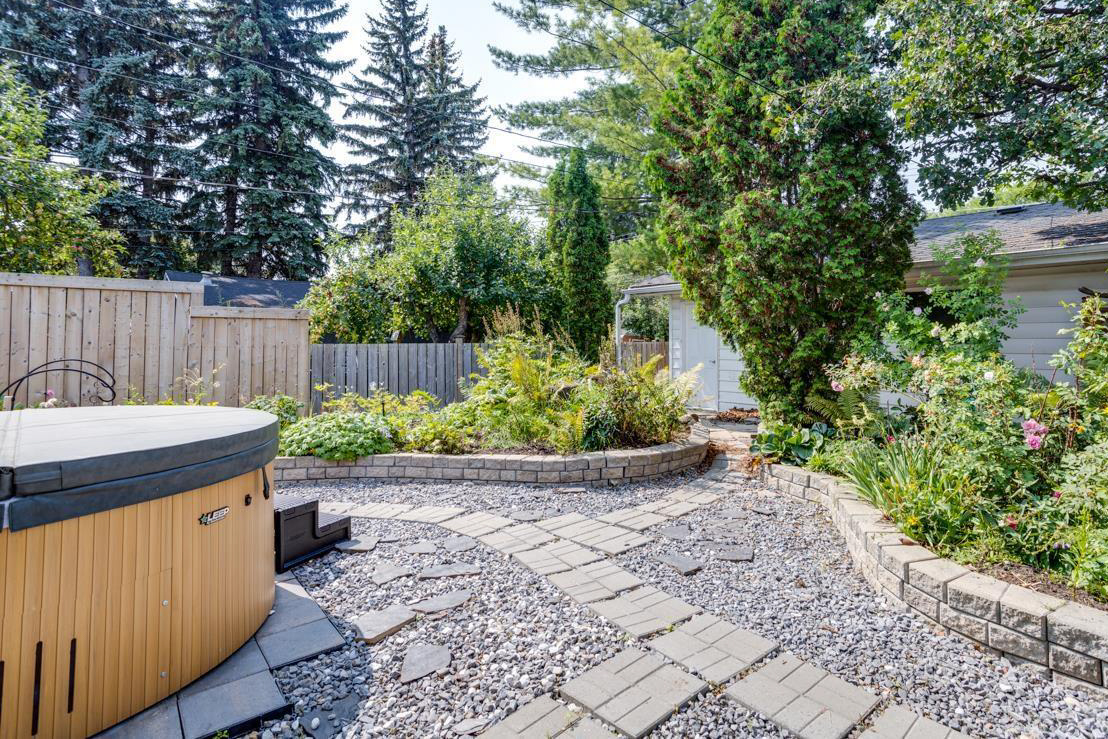
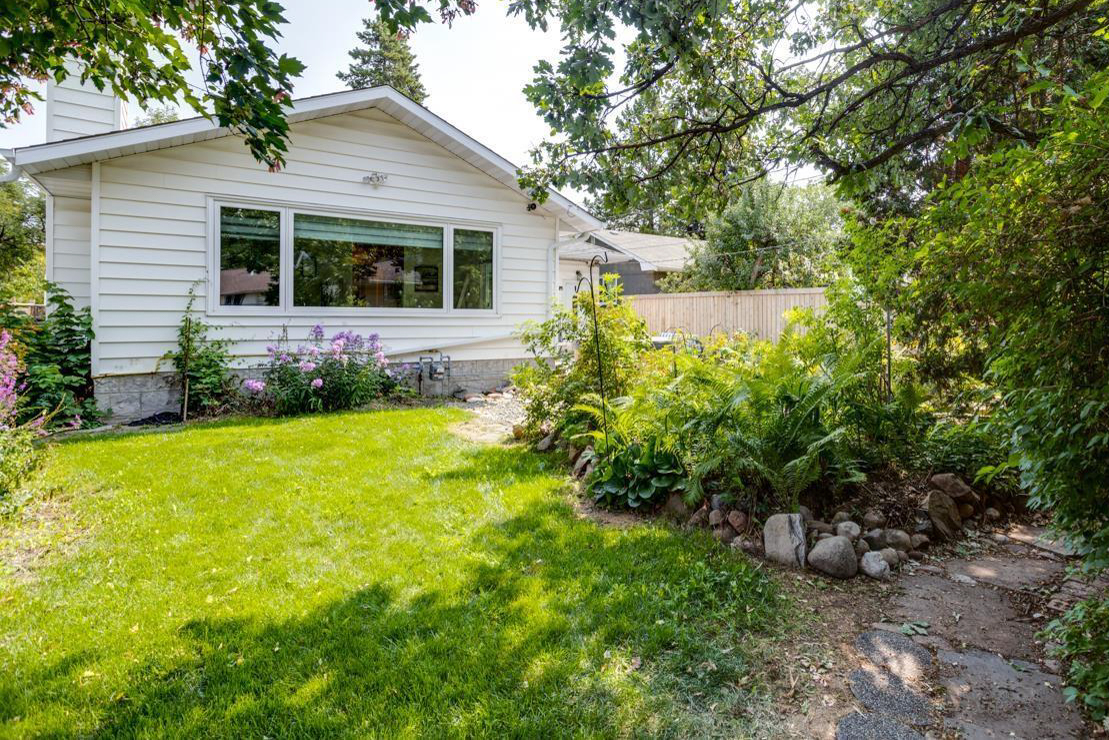
Wildlife-Friendly Habitat Certification: What It Takes
Certification is based on an honour system – you self-assess and identify the sources of wildlife habitat in your yard across six key categories: food, water, shelter, green gardening, sustainable practices, and earth-friendly gardening. Here is how our Edmonton backyard truly meets the essentials for creating a Certified Wildlife-Friendly Habitat:
1. Food: A Living Buffet
Our yard doesn’t just have plants – it’s a living buffet of nectar, pollen, fruit, berries, seeds, and nuts. We kept some of the previous owners’ flowers to keep pollinators fed while our native plants settle in – species like Fireweed (Chamaenerion angustifolium), Canada Goldenrod (Solidago canadensis), Yarrow (Achillea borealis), and Harebell (Campanula alaskana). Seasonal blooms in our vegetable garden – Marigold, Nasturtium, Borage, Alyssum – aren’t just pretty, they lure pollinators, attract beneficial insects, and naturally curb. Clover in the lawn adds even more layers of nourishment.
Birds and other wildlife depend on insects – especially during nesting season. That is why we plant native species that burst with insect life: Marsh Cinquefoil (Potentilla palustris), Marsh Marigold (Caltha palustris), Woods’ Rose (Rosa woodsii), American Brooklime (Veronica americana), and submerged aquatic plants like Hornwort (Ceratophyllum demersum).
We leave seed heads standing through fall and winter, giving birds real food long after the blooms fade. Feeders fill the gaps in the cold months, while homemade nectar summons the magical Ruby-throated hummingbird in the summer.
2. Water: The Pulse of the Yard
Our backyard pond is the heartbeat of the habitat. Birds bathe, bees sip, butterflies puddle, squirrels quench their thirst. Shallow edges and perching stones give safe, natural access; damp soil wicks moisture for mud-puddling butterflies, and a scattering of sand offers birds their own dust-bathing station.
We keep a simple shallow bird bath nearby – small, intentional, essential – supporting pollinators and songbirds alike.
Even the tiniest water source matters. You don’t need a full pond to make a difference – just clean, shallow water will pull wildlife into your space and help your yard thrive.
3. Shelter: Safe Havens Everywhere
Shelter isn’t decorative – it’s survival. We are layering dense native perennials, grasses, and vines to mimic real habitat. The result? A messy, layered landscape where animals actually want to be.
We leave leaf litter, hollow stems, and brush piles. Curved bark shells create hideaways, scattered rocks and logs offer cool shelters. Sunny bare patches support solitary bees.
Even potted plants and trellised vines matter – softening patios, shaping microhabitats, giving space for birds, insects, and small wildlife to thrive. Caterpillar host plants, preserved trees, and standing dead branches (snags) support nesting, insects, and cavity life. Wildlife flourishes in the messy, in-between spaces.
4. Green Gardening: Soil and Soil Life
Green gardening isn’t optional – it’s how life returns. Our rain barrel captures precious rainfall. Fallen leaves feed worms and fungi, some left to curl as soft winter cover, some gathered to mulch garden beds. Grass and clover clippings aren’t thrown away – they return nutrients to the soil, feeding plants and pollinators alike. Compositing kitchen scraps keeps the cycle alive.
These practices aren’t small gestures – they build a soil ecosystem that supports everything else.
5. Sustainable Practices
We remove invasives, replace lawn with native perennials, shrubs, and clover – reducing water use, boosting habitat, softening the landscape into something ecologically alive.
At the center: native plants, not for looks, but for life. They feed insects, birds, and pollinators in ways ornamental imports could never. Every species rebuilds the web of life in our tiny urban yard.
6. Earth-Friendly Gardening
Chemical-free gardening has always been non-negotiable – no pesticides, herbicides, or toxins. This yard was built to support life, not suppress it. Choosing not to poison the soil, insects, or food webs was foundational, not corrective.
A few nibbled leaves or unexpected visitors? Welcome to a balanced ecosystem. This is wildlife-friendly gardening in action: letting life thrive, messy, imperfect, and full of surprises – without chemicals.
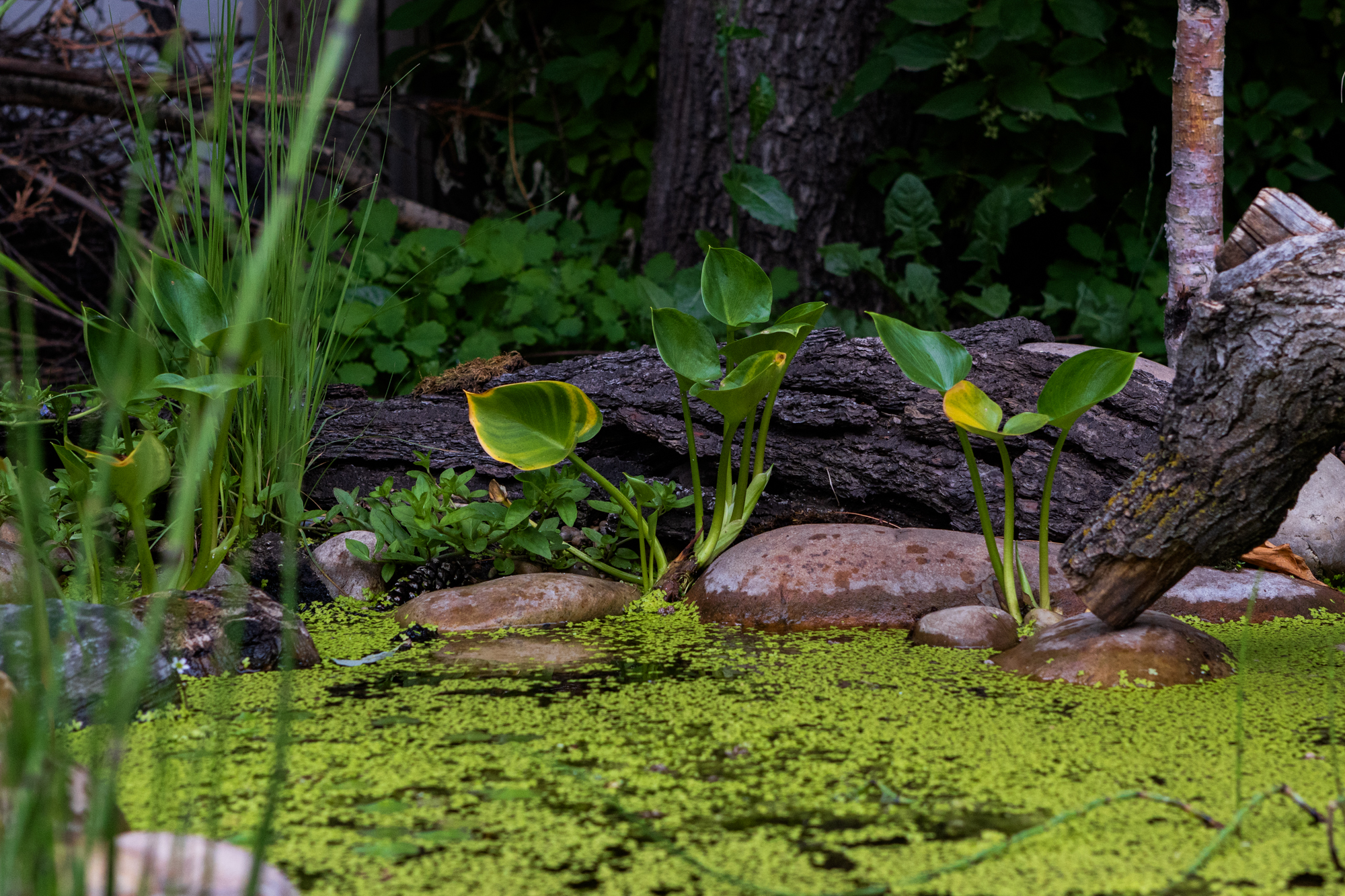
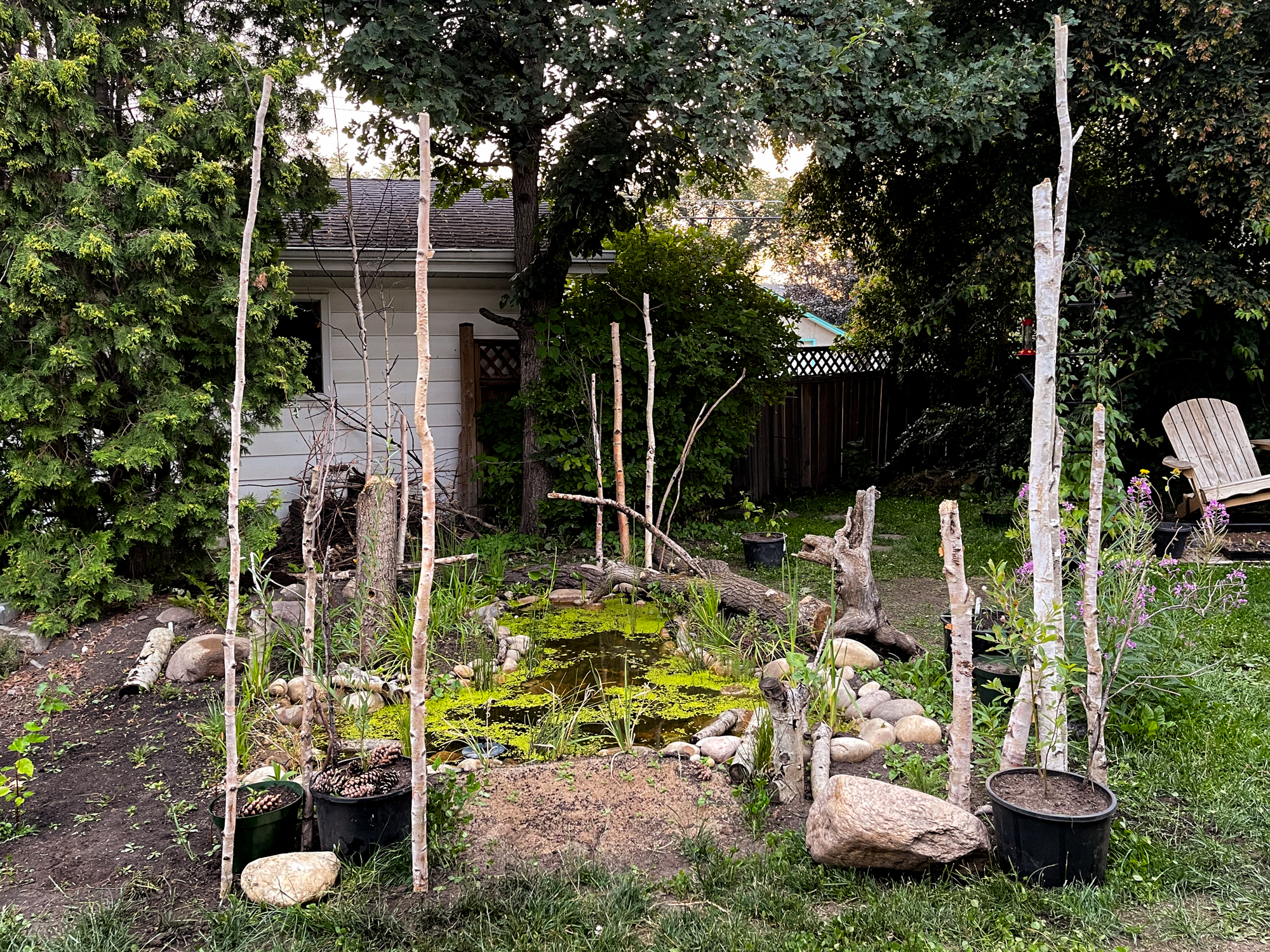
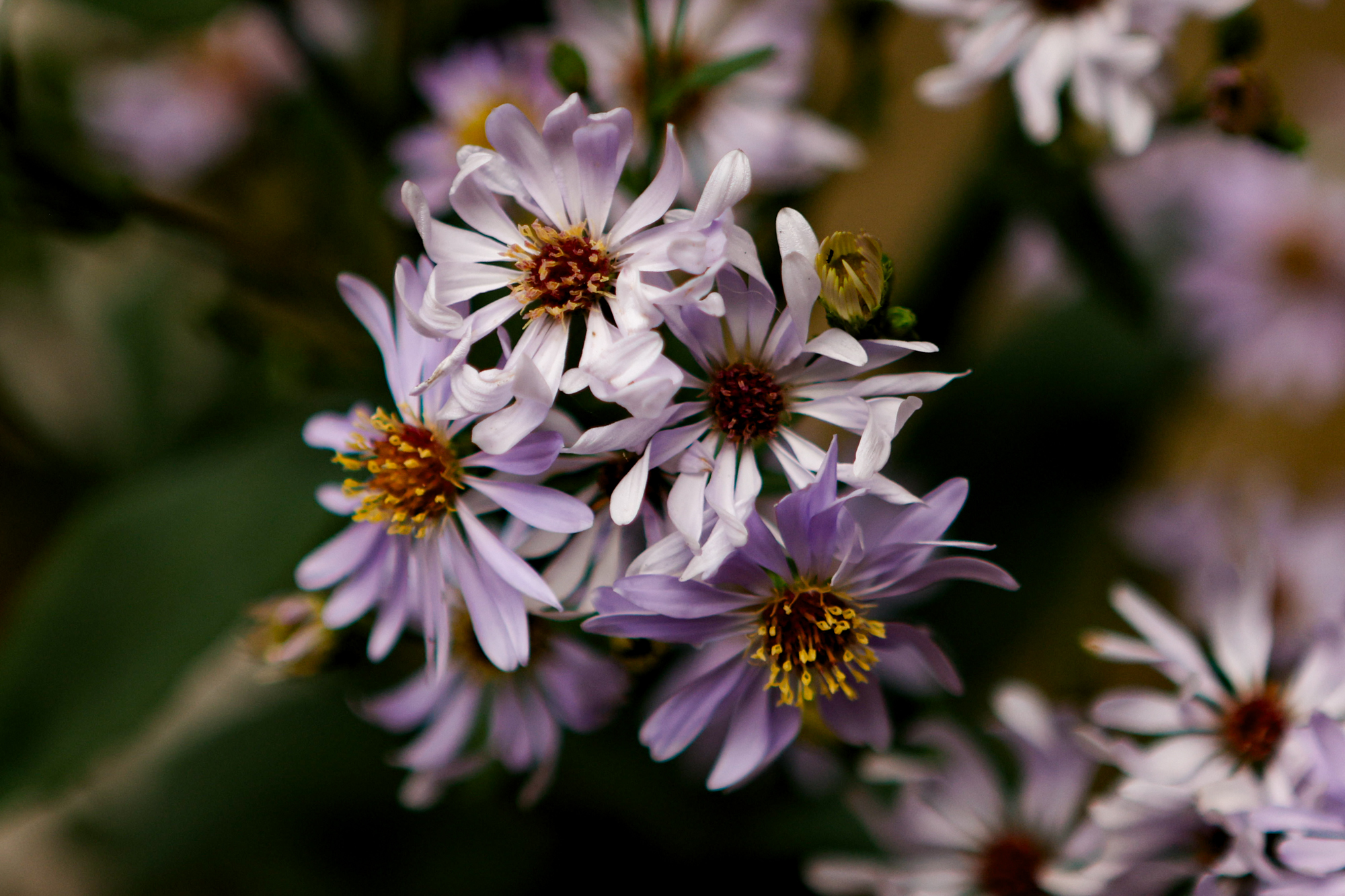
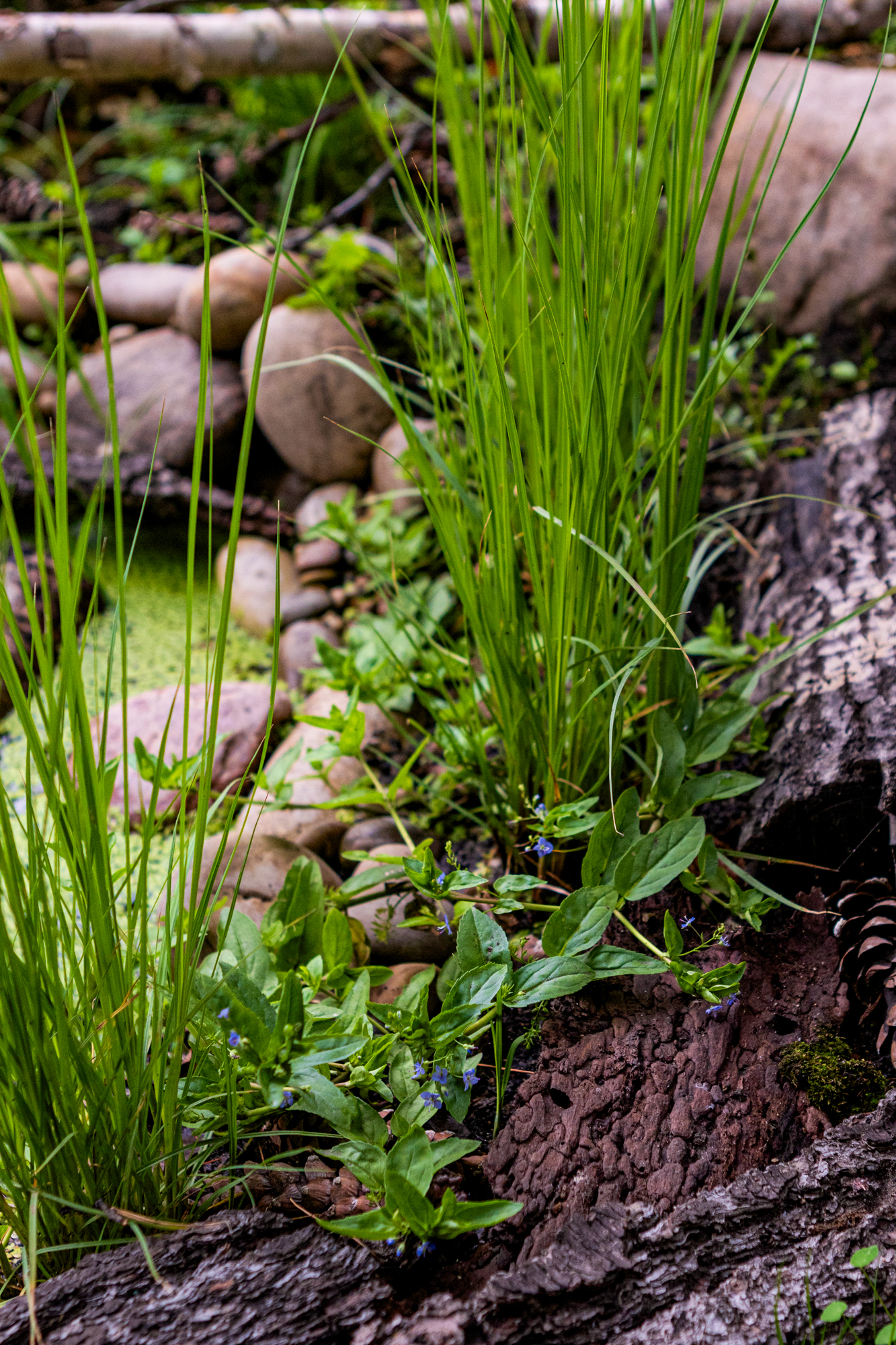
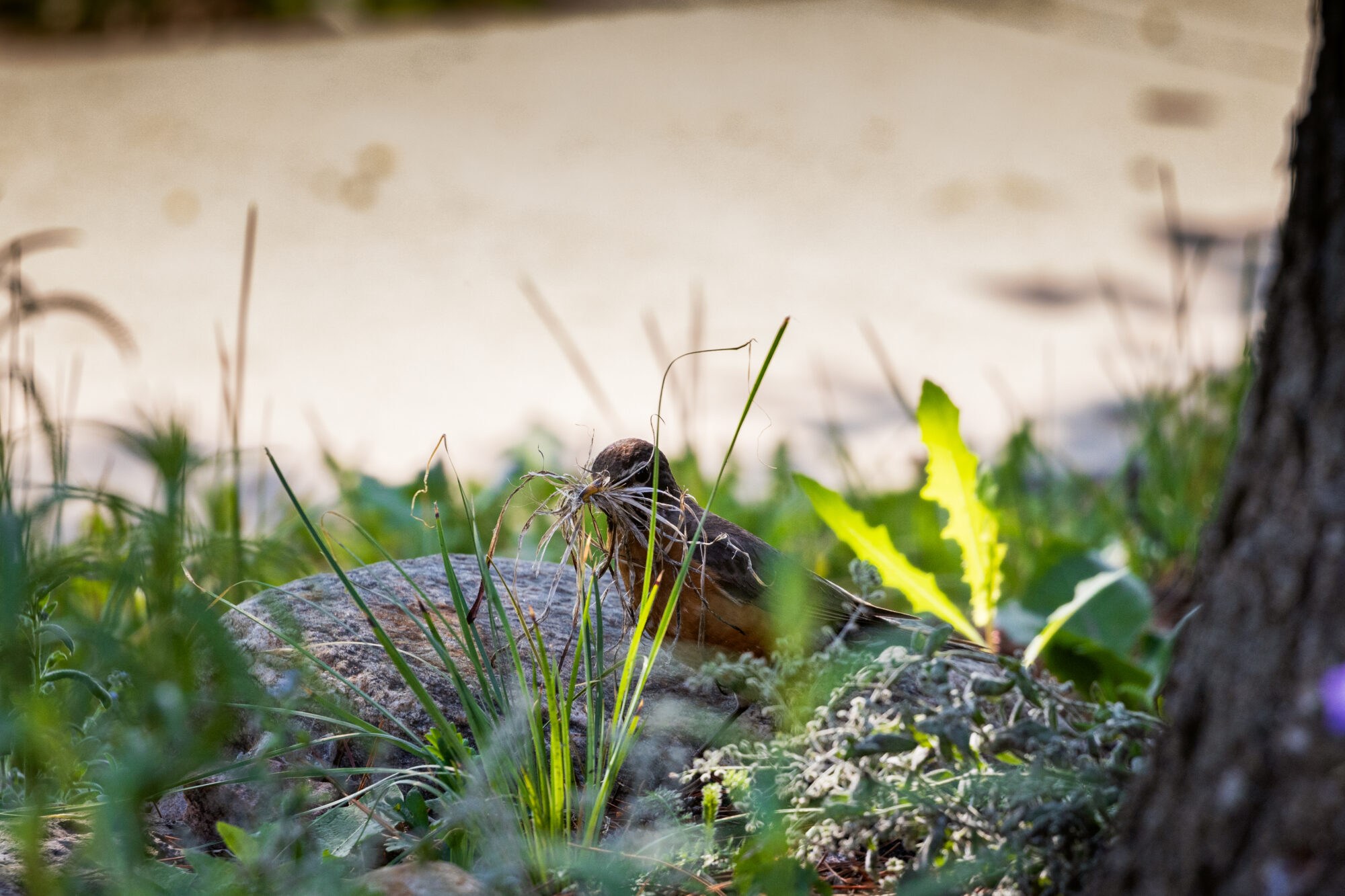
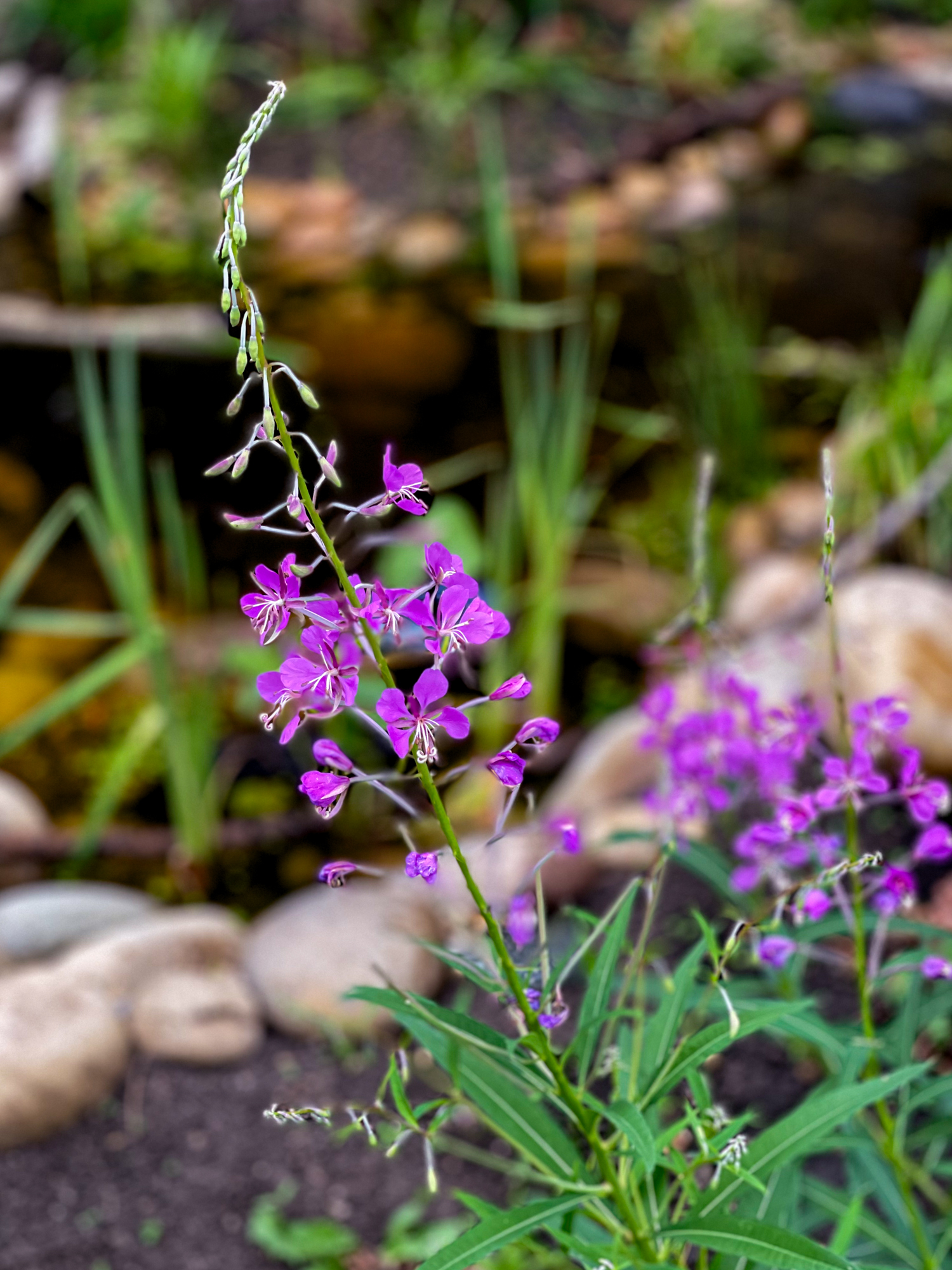
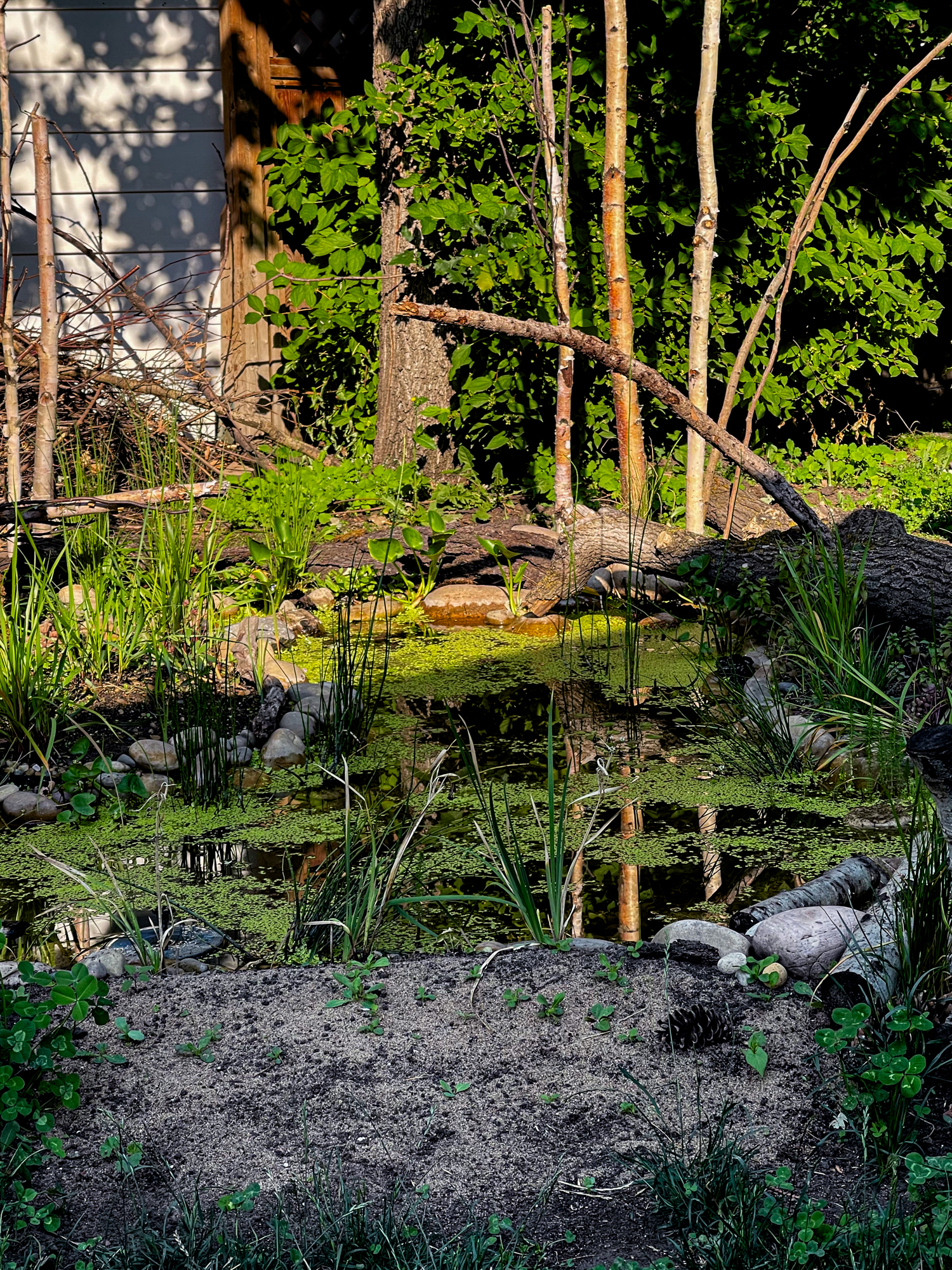
Everyday Actions That Matter
Not every meaningful action fits neatly into a checklist – and these are not required for certification – but they shape life into the yard in ways that matter far more than boxes ticked. These quiet wildlife-friendly choices reduce harm and make this backyard a place where life actually wants to be.
1. Keeping It Quiet & Low-Impact
We use a manual reel mower (yes, the old-school kind with zero engine roar) and an electric trimmer to occasionally keep things tidy without choking the yard in noise and fumes. Music? Rare, soft, and never louder than a conversation. Fires? Occasional, clean, mindful – no smoke clouds, no trash burned.
Noise may seem trivial – but for birds, pollinators, and small wildlife, quiet spaces mean less stress, safer communication, and uninterrupted rest.
2. Protecting the Night
Light pollution is a predator in disguise. We use motion-sensor outdoor lighting and draw blinds, dim indoor lights, and keep the yard dark after dusk. These small choices make a massive difference for nocturnal wildlife – moths, bats, migratory birds, and other creatures that need darkness to survive.
Artificial light can scramble entire lifecycles. By protecting the night, we safeguard the rhythms that wildlife depend on.
3. Sharing the Space Respectfully
Our dog stays leashed if wildlife is present – safety first for every visitor. Beyond that, we’ve removed unnecessary hardscaping and reintroduced soft, living edges: trellises with vines, ferns along the patio, and a handmade planter covering a stretch of sidewalk. Where once there was only stone, there is now shelter, shade, and life.
Individually, these choices may seem small. Together, they weave intention into the fabric of daily life, creating a quieter, darker, gentler way of coexisting – a yard where. the wild feels safe enough to return, linger, and thrive.
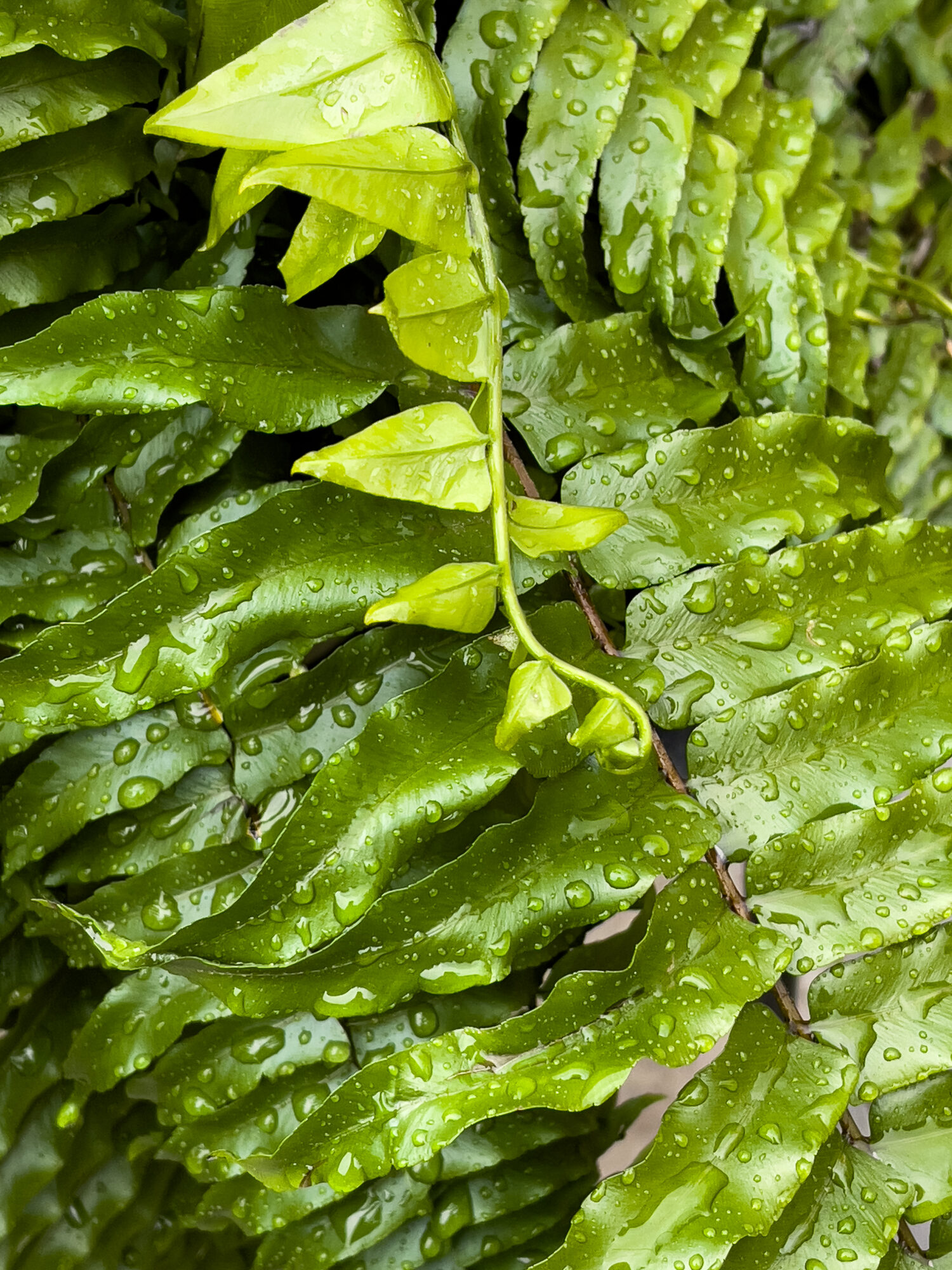
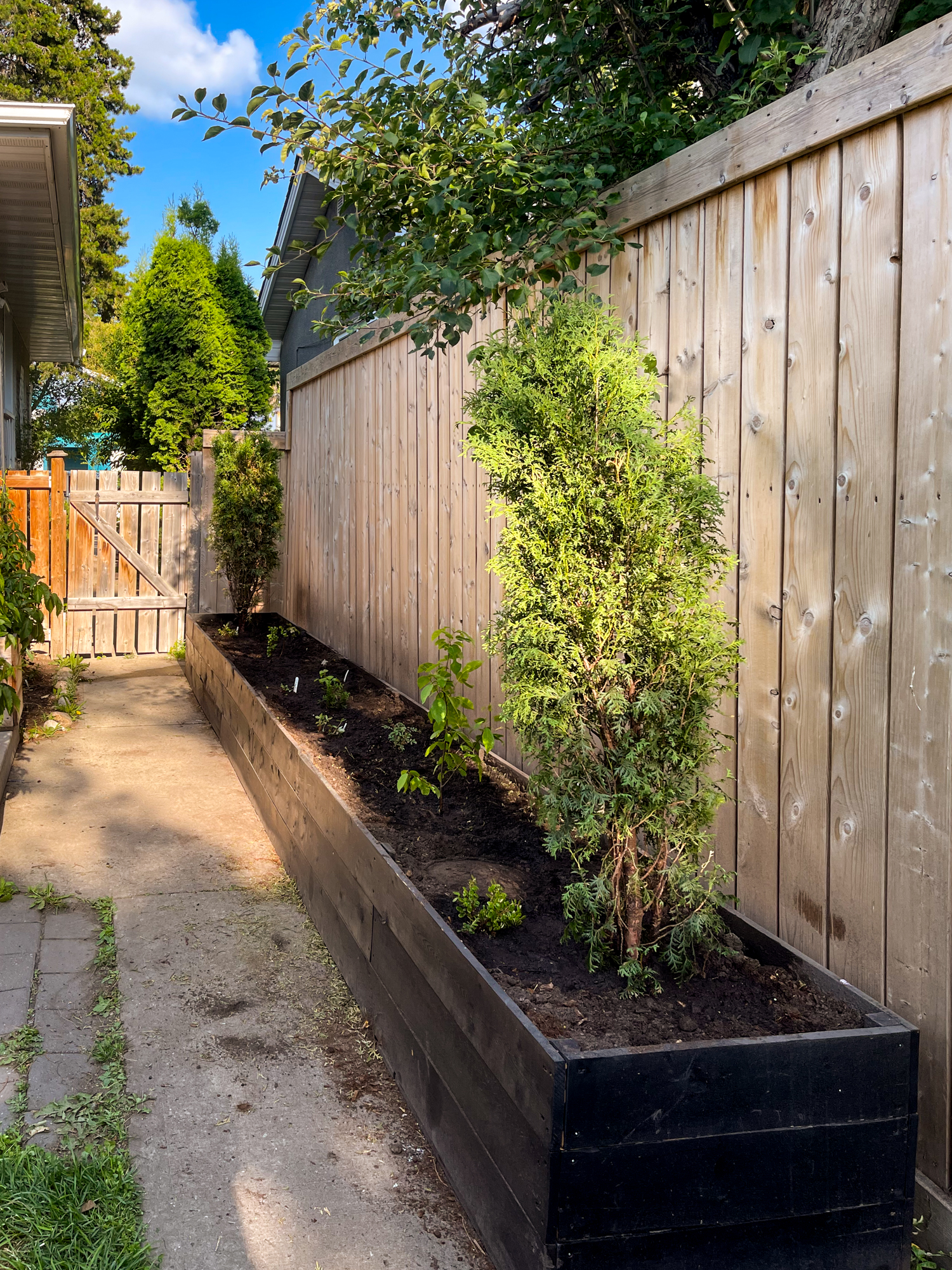
Why This Matters
Creating a backyard wildlife habitat isn’t just about looking good social media – it’s about giving life a fighting chance right outside your door. Urban spaces are often ecological deserts, but even a small patch of land can feed, shelter, and sustain birds, pollinators, insects, and small mammals. Every native plant, every layered garden bed, every drop of water is a thread in the web of urban life.
Rewilding our yards does more than beautify – it connects fragmented habitats, opens safer flight paths, and crates lifelines for wildlife navigating a cityscape full of obstacles. Monarchs find milkweed to lay their eggs. Bees discover a constant nectar buffet. Birds and small mammals gain safe spaces to forage and nest. Insects and soil organisms flourish. Even tiny acts – layering plants, leaving fallen branches, adding shallow water dishes – create microhabitats that ripple outward, strengthening biodiversity far beyond your fence line.
And yes, this matters to humans, too:
- Air that actually breathes: More plants filter pollutants and oxygenate the space.
- Cooler summers, calmer minds: Shade and vegetation reduce heat and stress.
- Water that stays where it should: Plants slow runoff, capture rainfall, and hydrate soil.
- Movement with purpose: Gardening connects body, mind, and the outdoors.
- Wonder on tap: Watching wildlife return nurtures curiosity, balance, and a deeper connection to life.
Every yard, balcony, or planter box can tip the scales for life in the city. By letting wild things move, feed, and thrive, we don’t just help the wildlife – we help ourselves reclaim a richer, wilder, more resilient world.
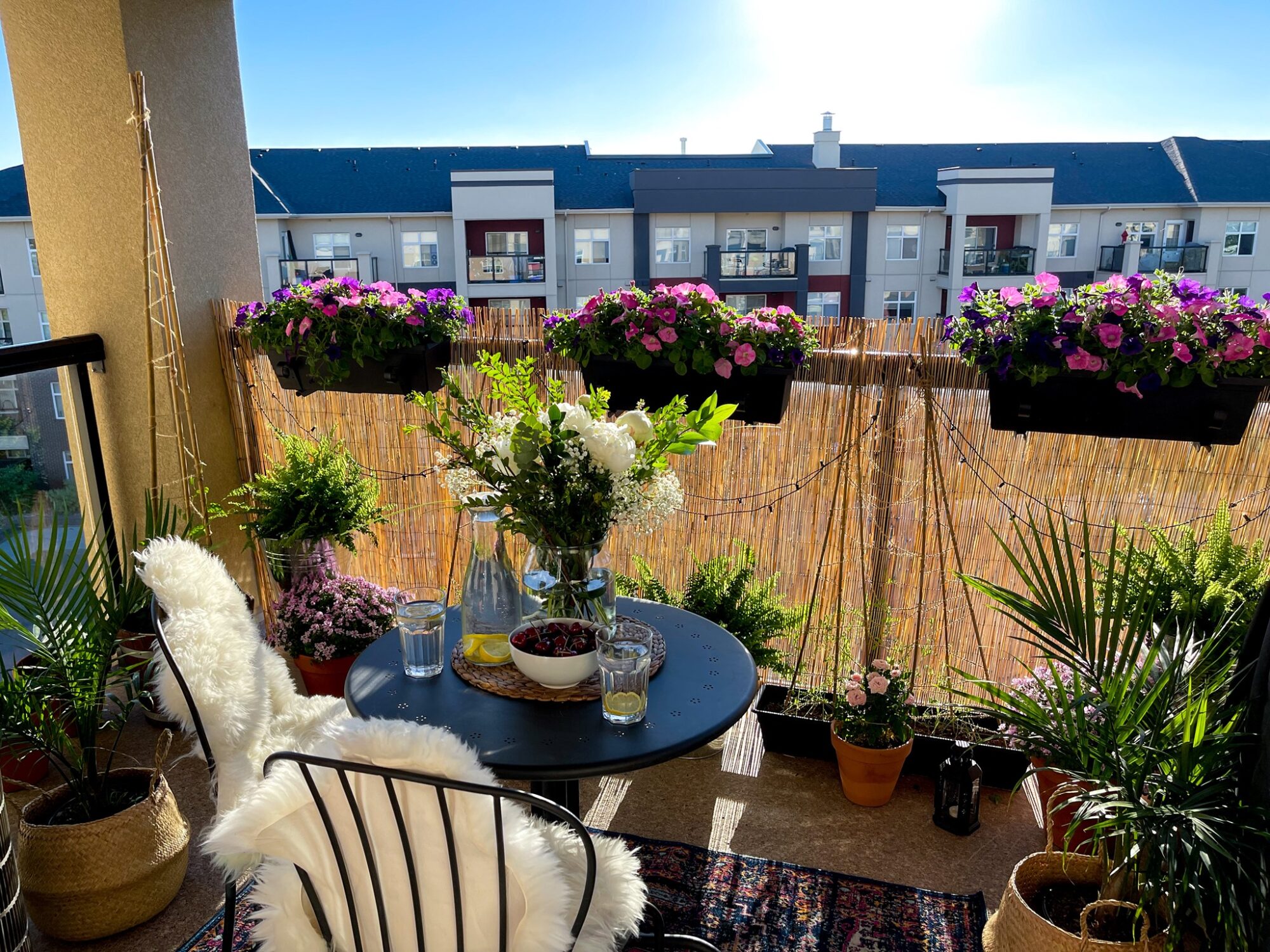
Proof that every balcony, planter, or yard can become part of the web of life.
What I’ve Learned So Far (And What Might Help You On Your Rewilding Journey)
- You don’t have to crush yourself trying to do it all at once. Certification is about showing up, not perfection.
- Native plants are your foundation. Even a handful of species adapted to your region can flip your yard from sterile to alive.
- A little chaos is not just okay – it’s essential. Wildlife thrives in layers, diversity, and spaces that feel “messy” to humans. Let go of control. Let nature lead.
- Trial and error will slap you awake, and limitations are part of the process. Power lines, buried pipes, weird soil patches, local bylaws – these aren’t obstacles, they’re your creative prompts. Adapt. Improvise. Grow anyway. (But please obey your local bylaws and click before you dig)
- Your yard doesn’t have to mimic anyone else’s. There is no single “right” way to make a wildlife habitat – and if someone tells you otherwise, ignore them. You do you.
- Celebrate what you’ve done. Stop scrolling, put down the camera, and actually notice how far you’ve come before trying to do more.
Wildlife We’ve Welcomed (So Far)
Turning our yard into a Certified Wildlife-Friendly Habitat has brought more than plants and projects – it has brought chaos, surprise, and life in its purest form. From songbirds splashing recklessly in the pond to pollinators dancing through the flowers, every season introduces a new cast of characters. Here is a glimpse of the many creatures now claiming space, finding shelter, and stirring curiosity in our little patch of land.
- Birds: Based on my own observations, 48 species have actually landed here, with 67 species recorded overall (seen, heard, or flying overhead). Curious about the others? Dive into the full list here and marvel at the unexpected guests.
- Mammals: Snowshoe hare, squirrel, mice, and even a coyote (seen right in front of the yard).
- Insects & Others: Butterflies (including Mourning Cloak), moths (including Police Car moth), bumblebees, honey bees, wasps, ladybugs, dragonflies, damselflies, grasshoppers, Carolina locust, aphids, beetles, ants, spiders, slugs, flies, caterpillars, Twice-stabbed stink bug, crane flies, and countless others too tiny or fast to even name.
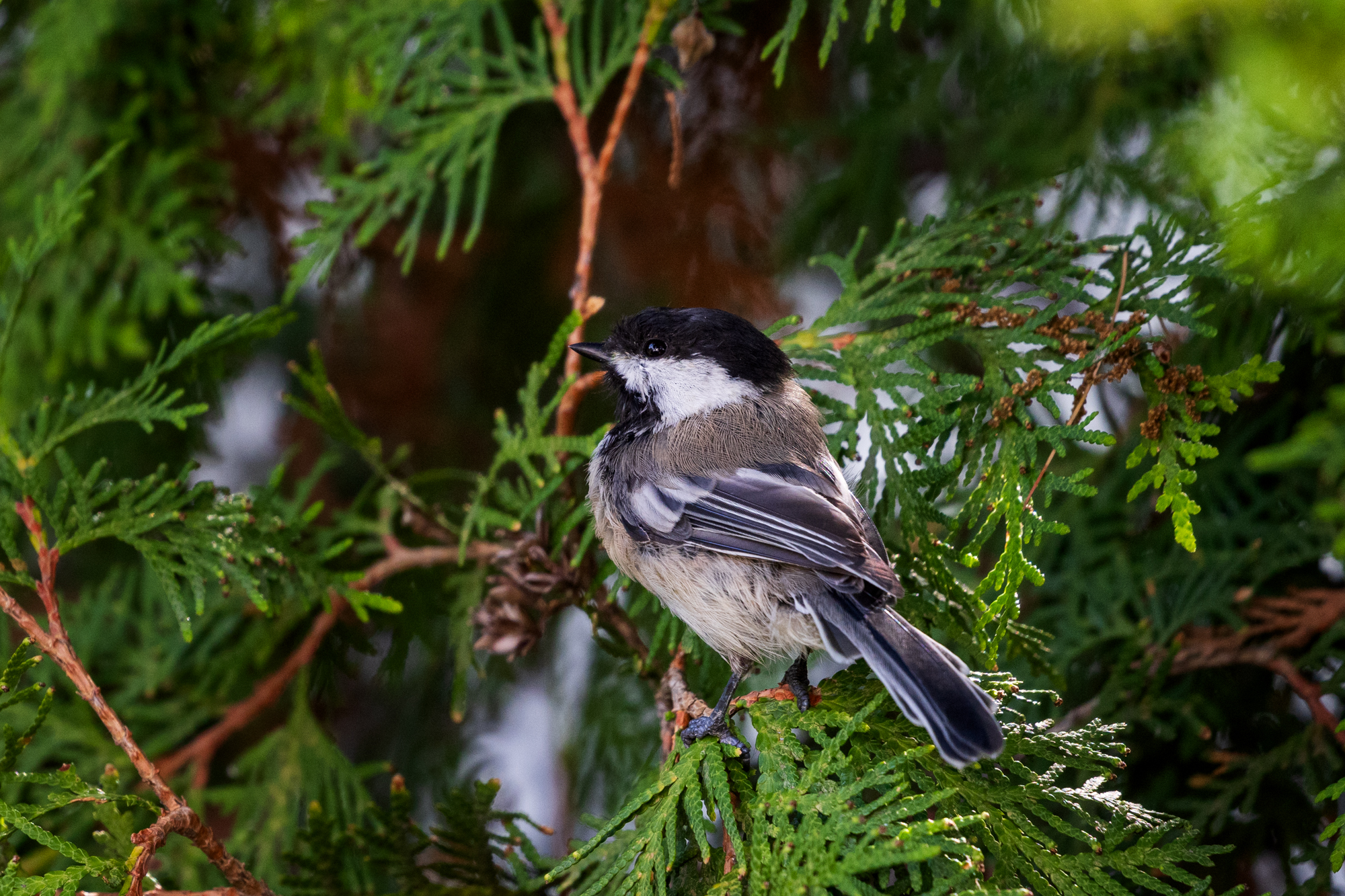
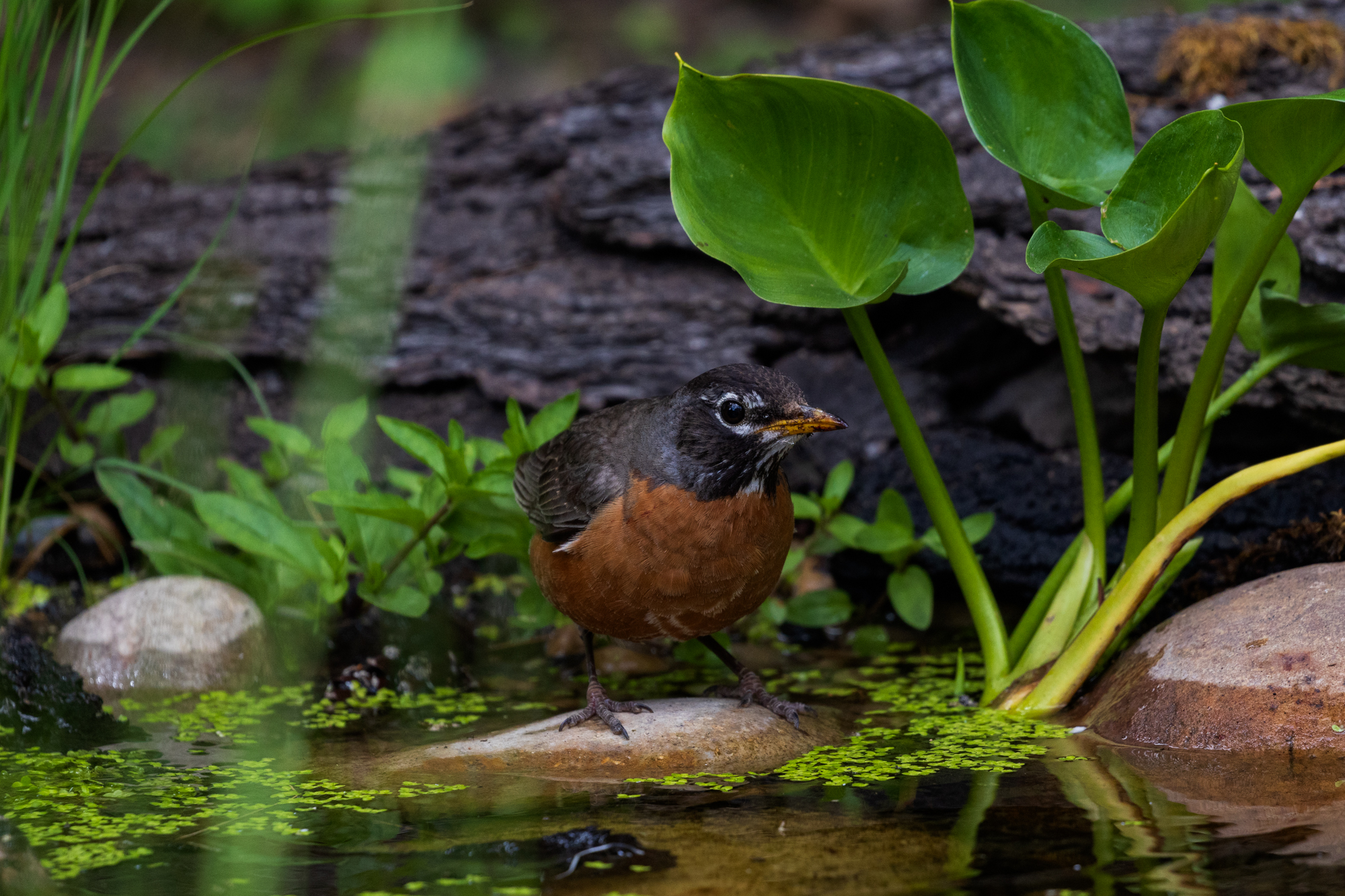
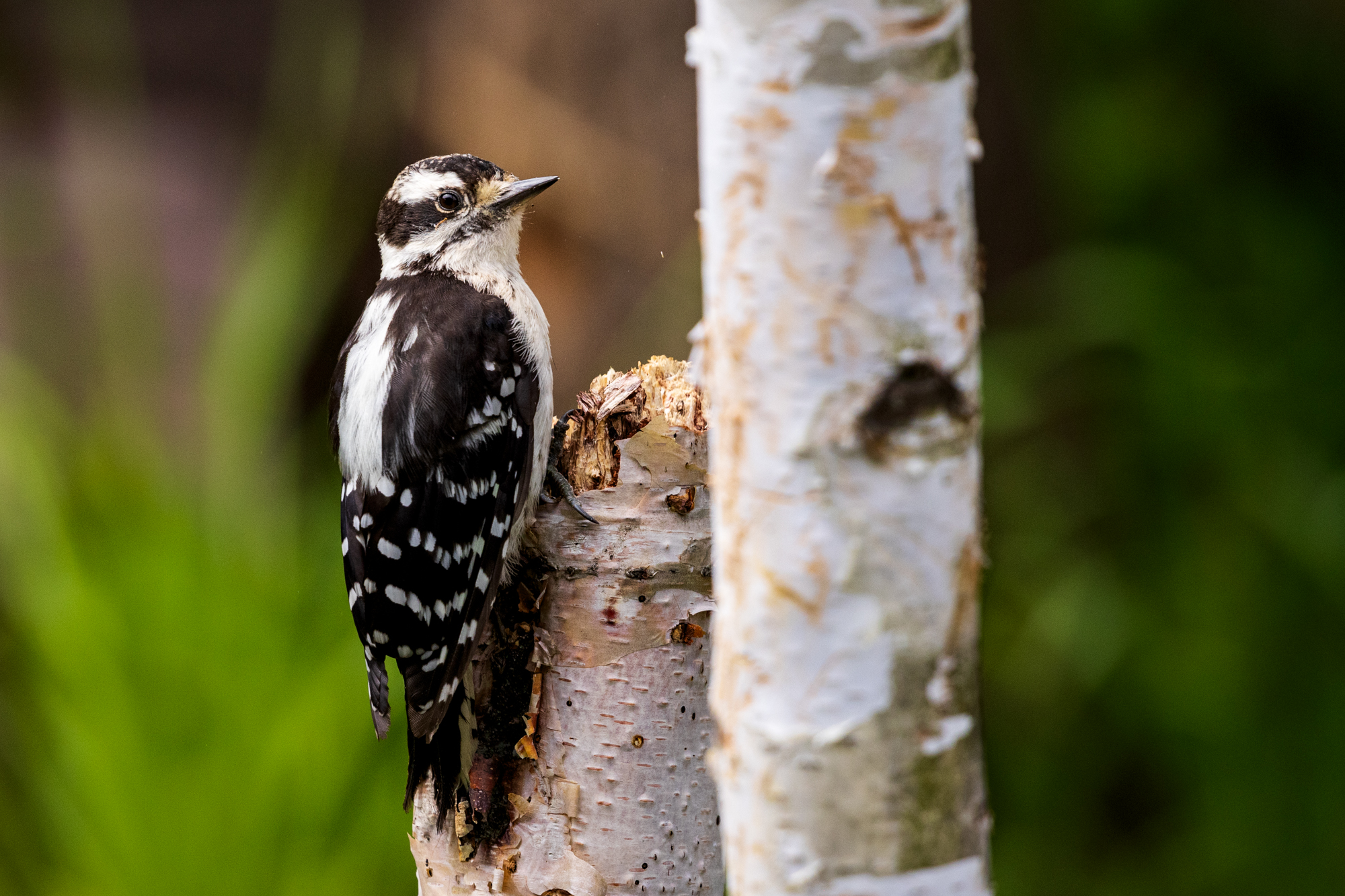
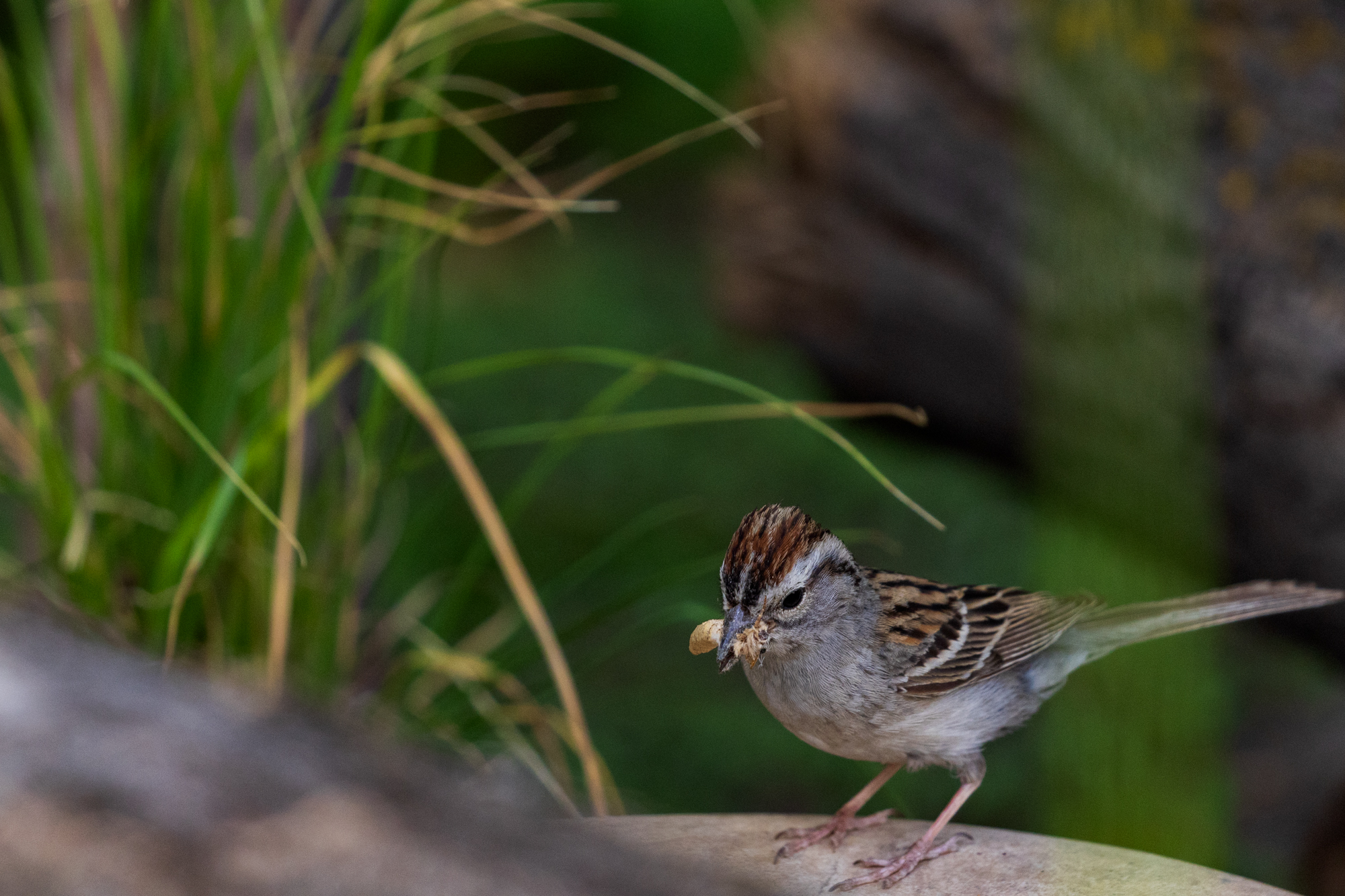
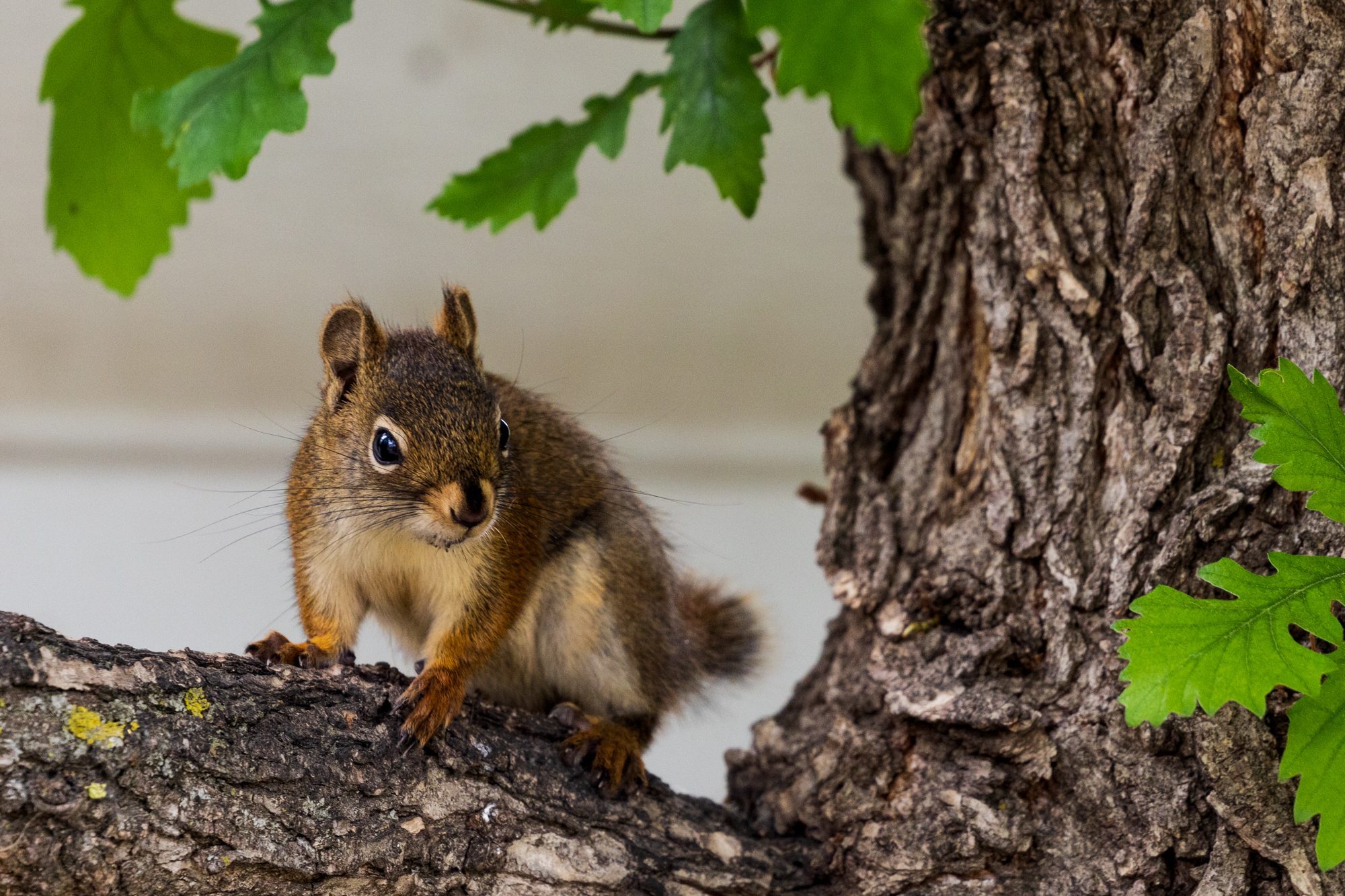
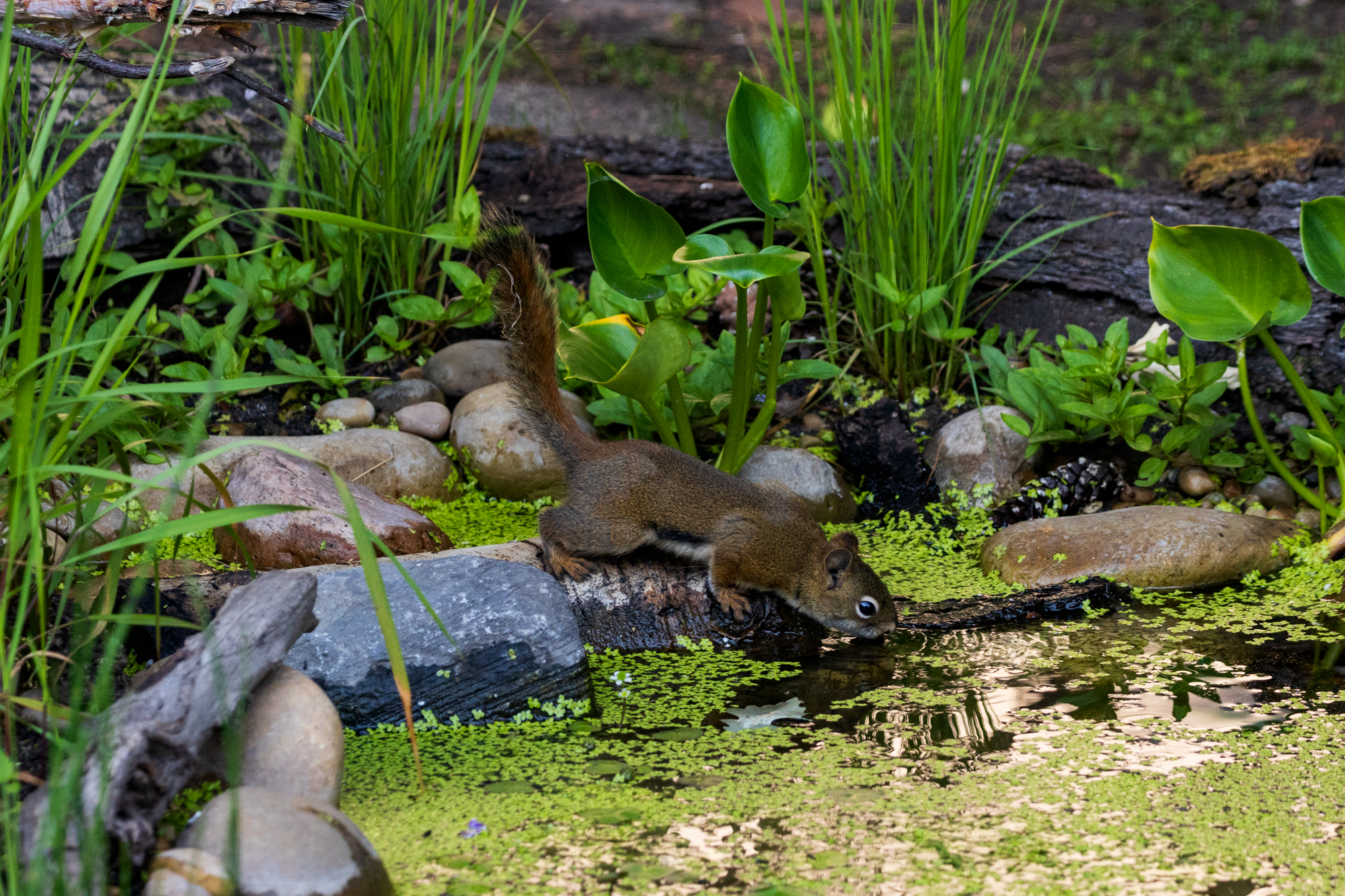
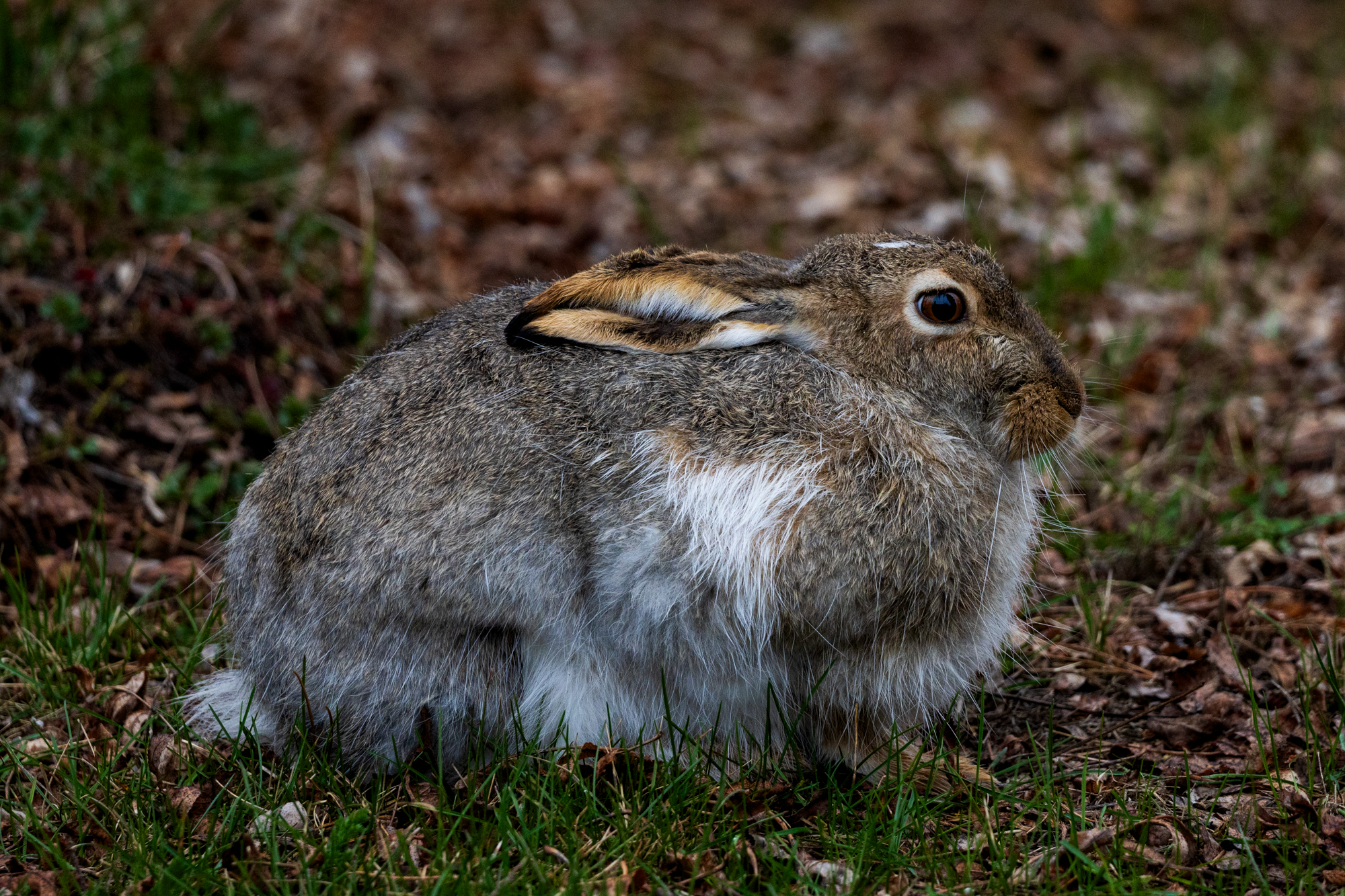
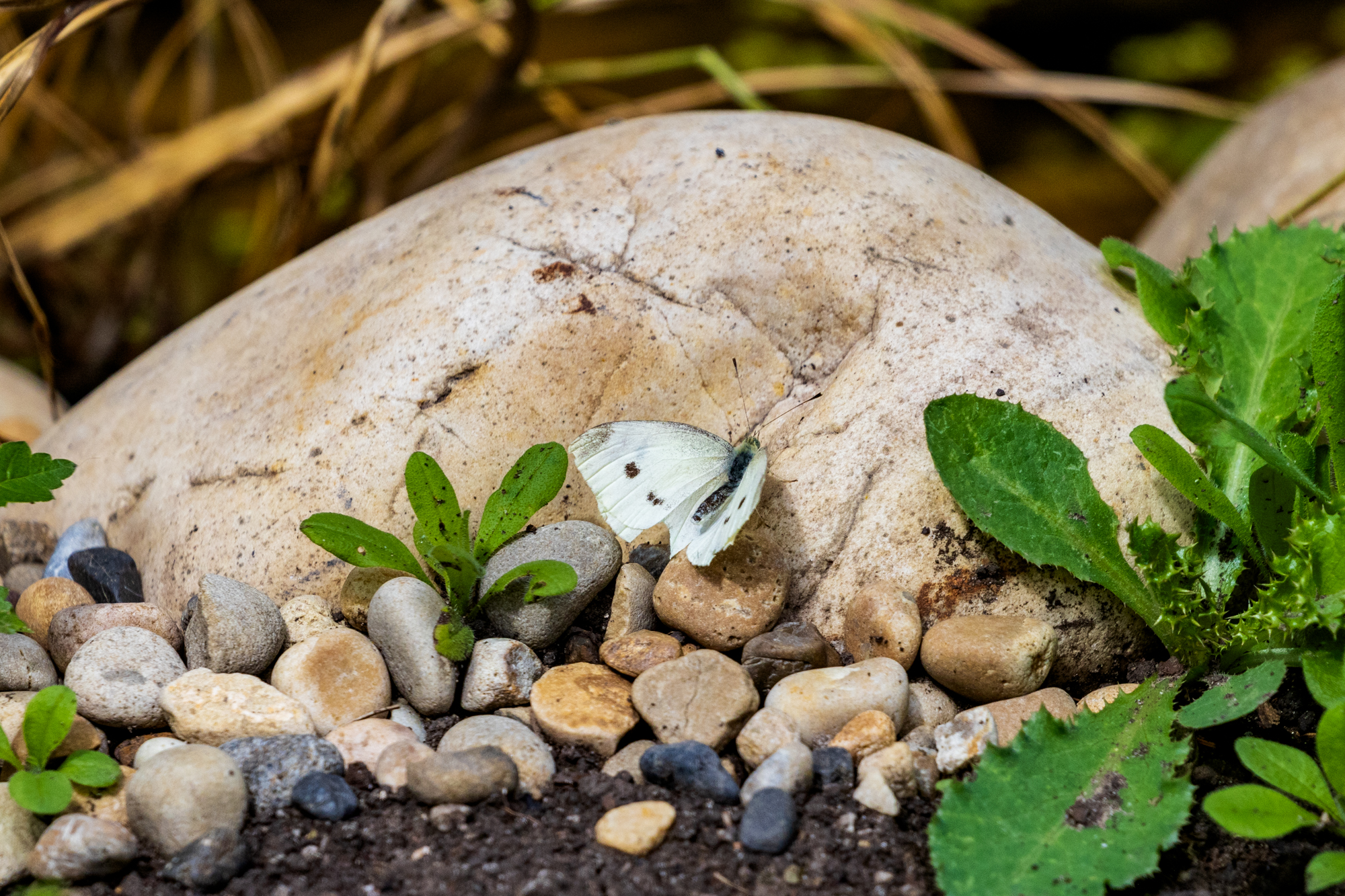
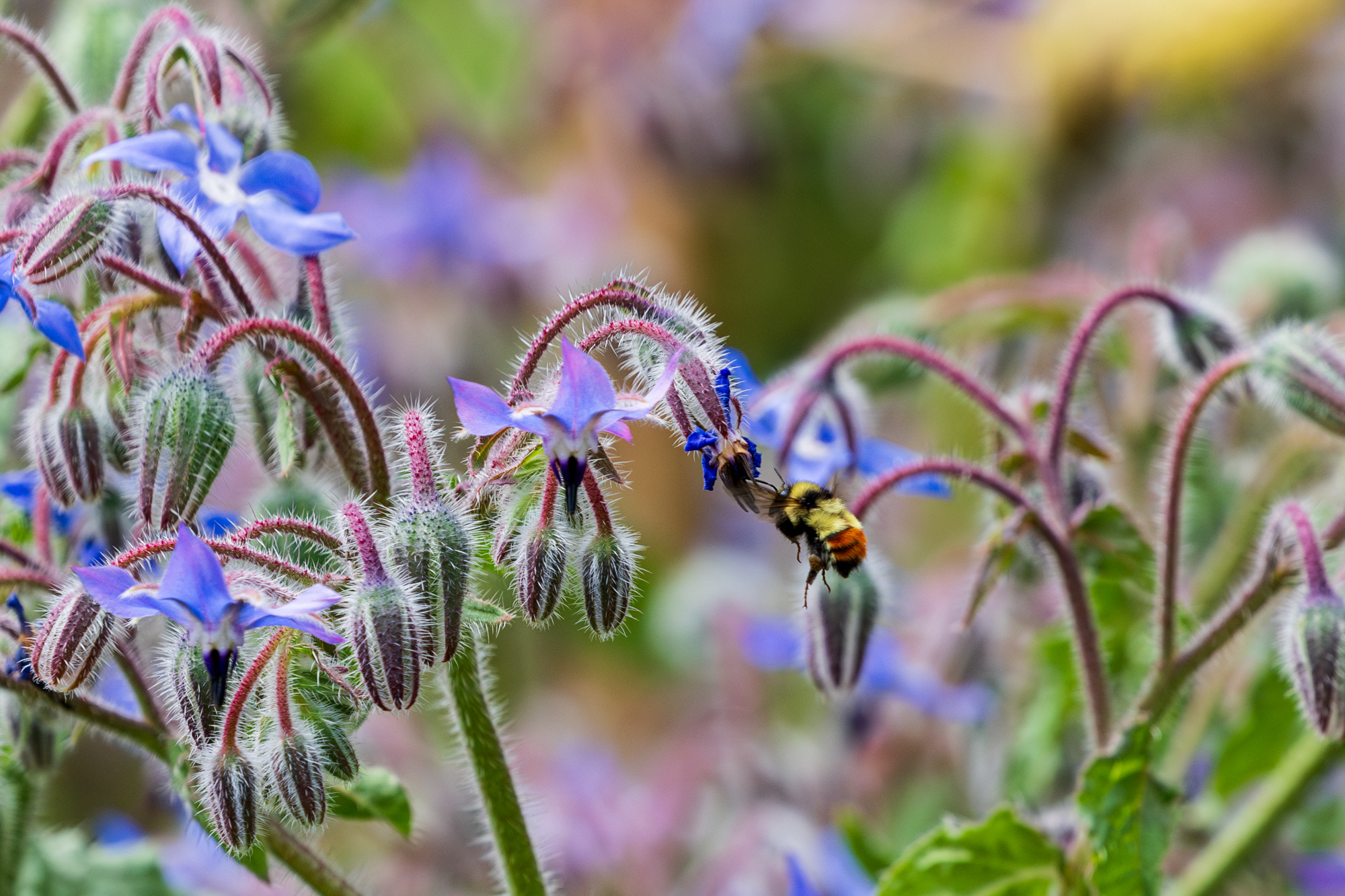
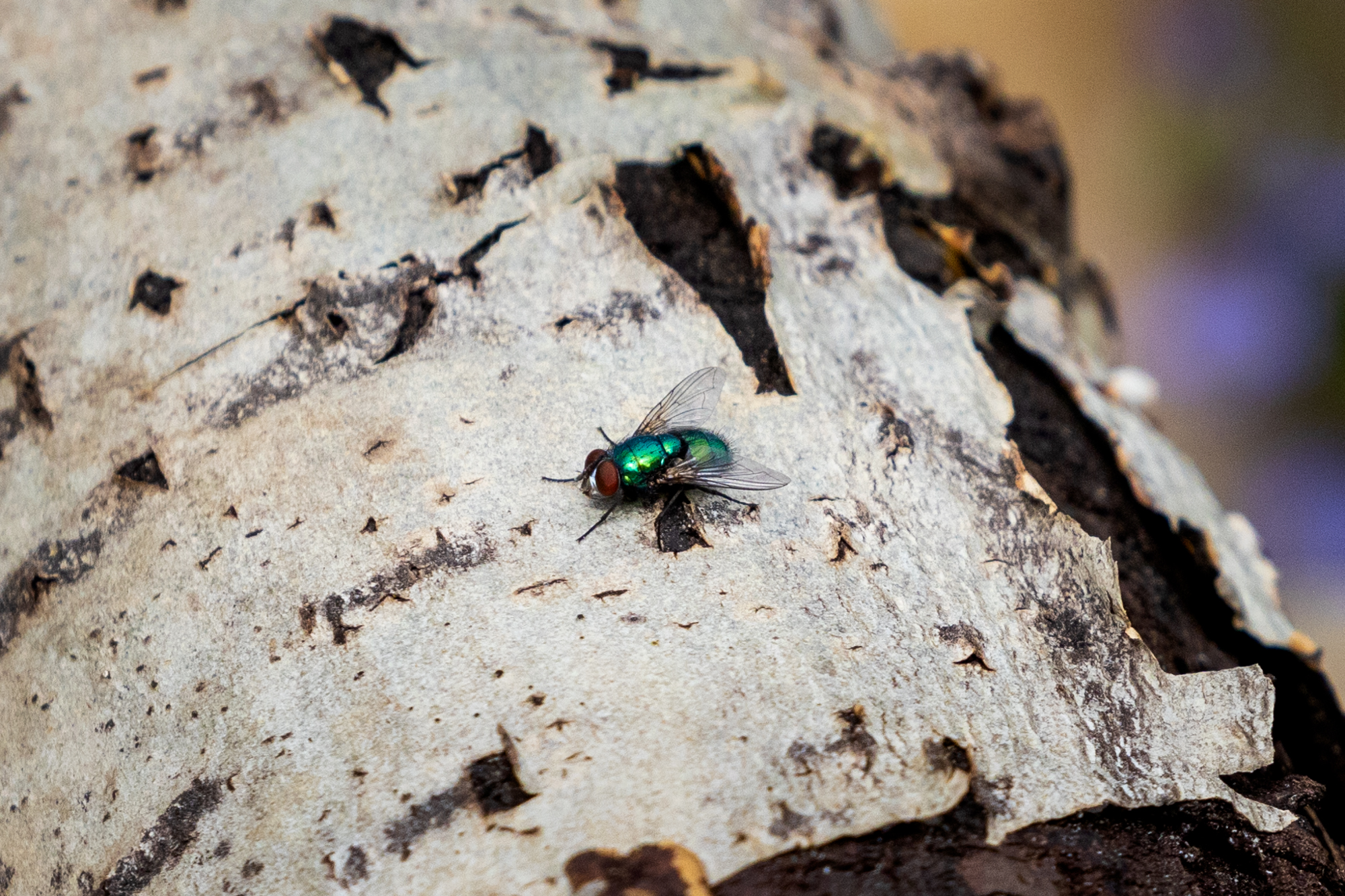
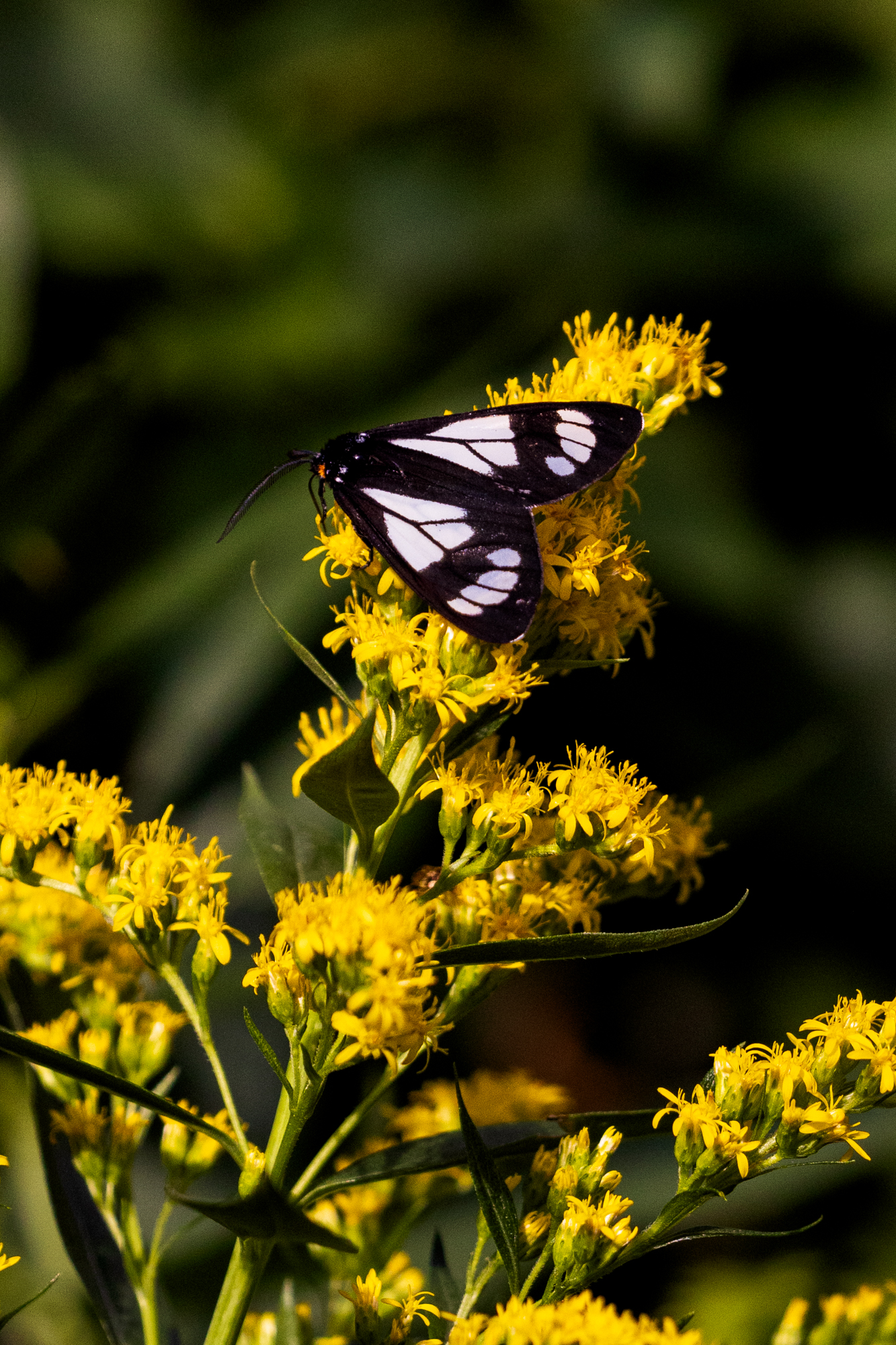
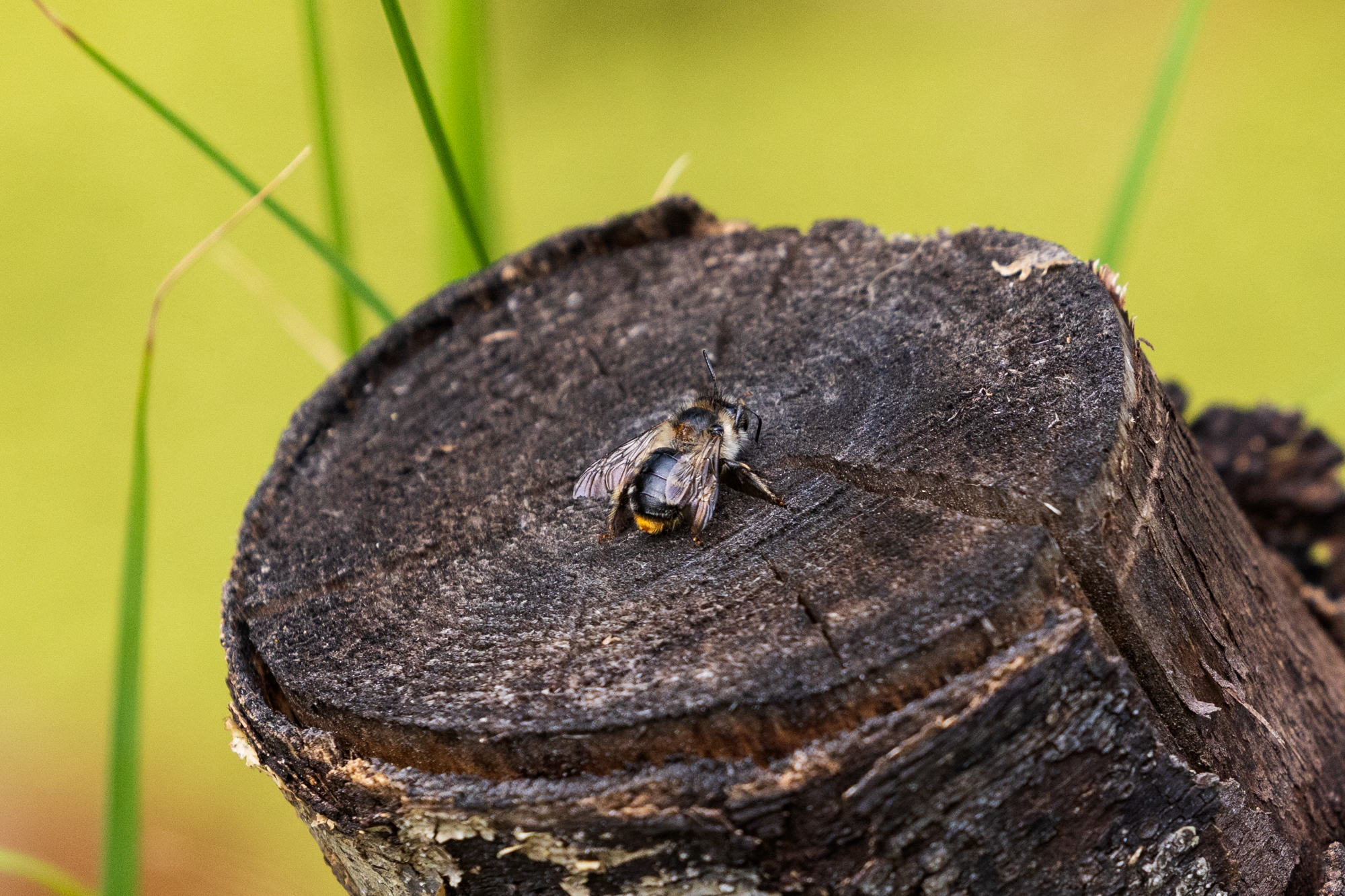
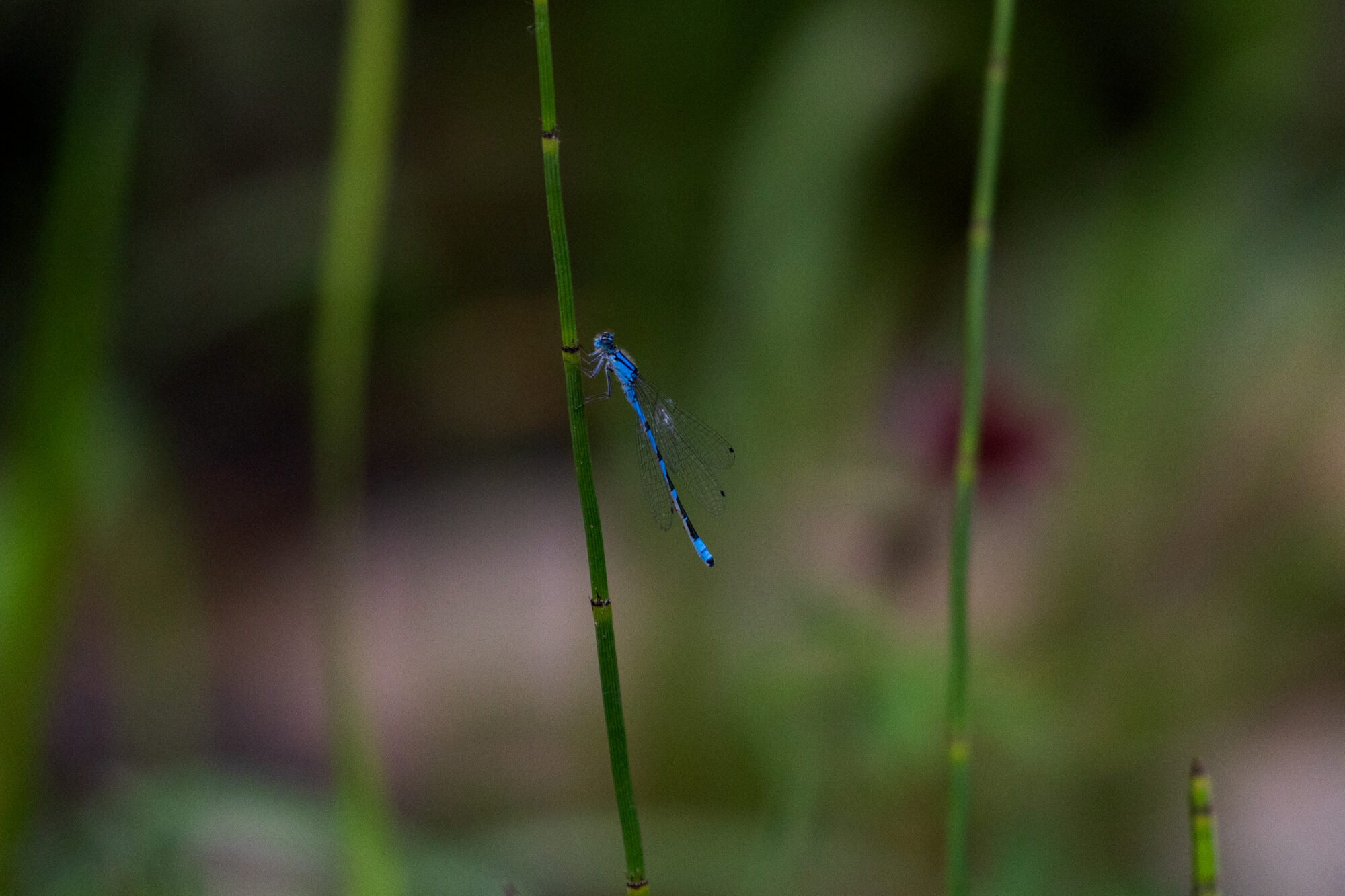
Moments To Remember
Tiny snapshots of wild encounters unfolding in real time
- Six Blue Jay fledglings testing their wings like tiny, feathered daredevils in the branches above.
- Three young Magpies learn to squawk, squabble, and throw chaos at everything in sight – including the dog.
- A Robin gathering bits of moss and grass for a nest, weeks later watching its fledgings explore our habitat for the first time, blinking at this strange, safe world we created.
- Two squirrels spent the spring chasing each other through the trees and rooftops – until one day, four smaller versions tumbled into the yard. The babies tumbled, leapt, and wrestled, turning the yard into their own acrobatic playground.
Every new visitor is proof that the habitat is alive and answering the call.
The wild is not only returning – it’s claiming its space, bold and unapologetic.
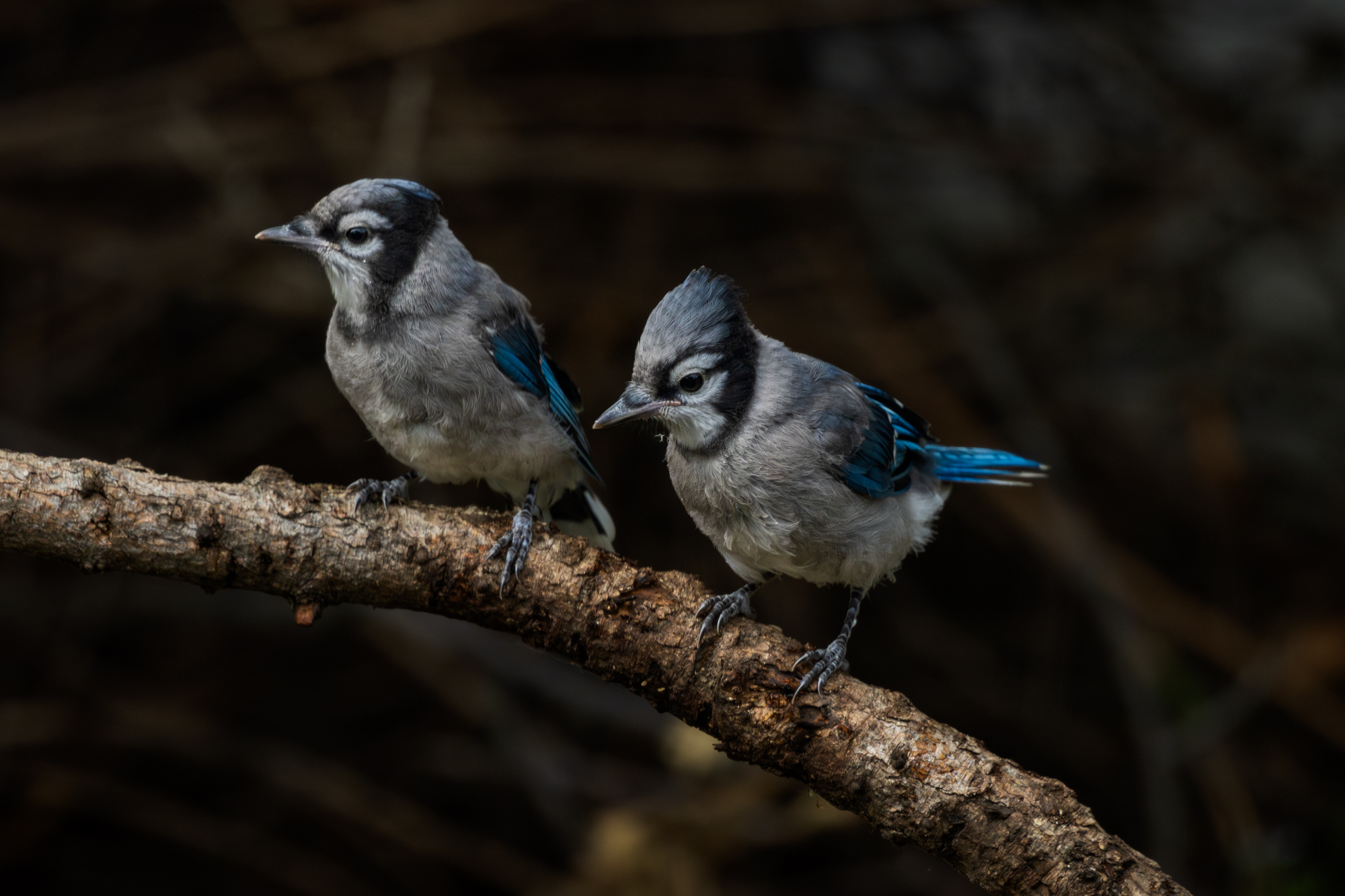
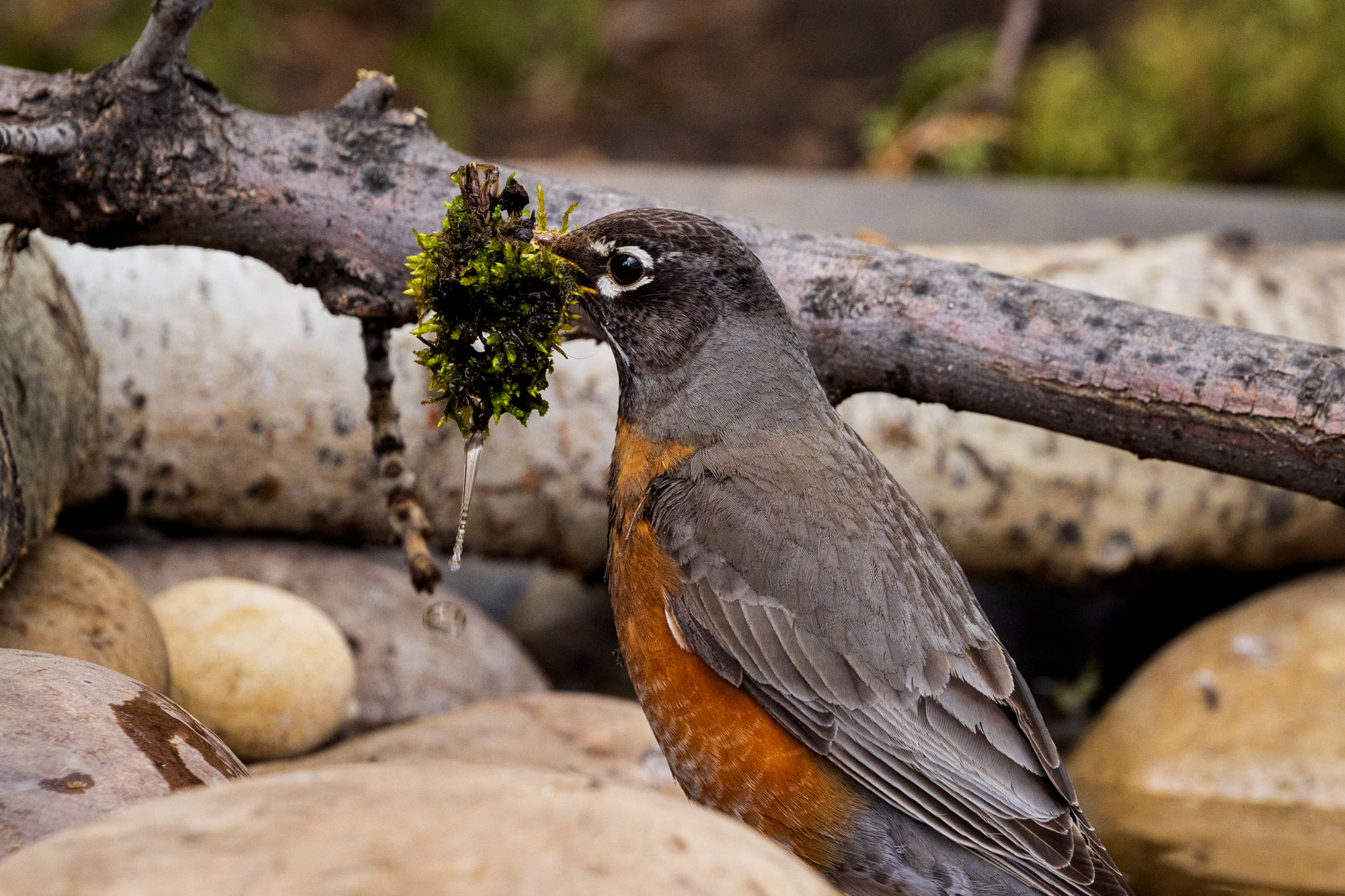
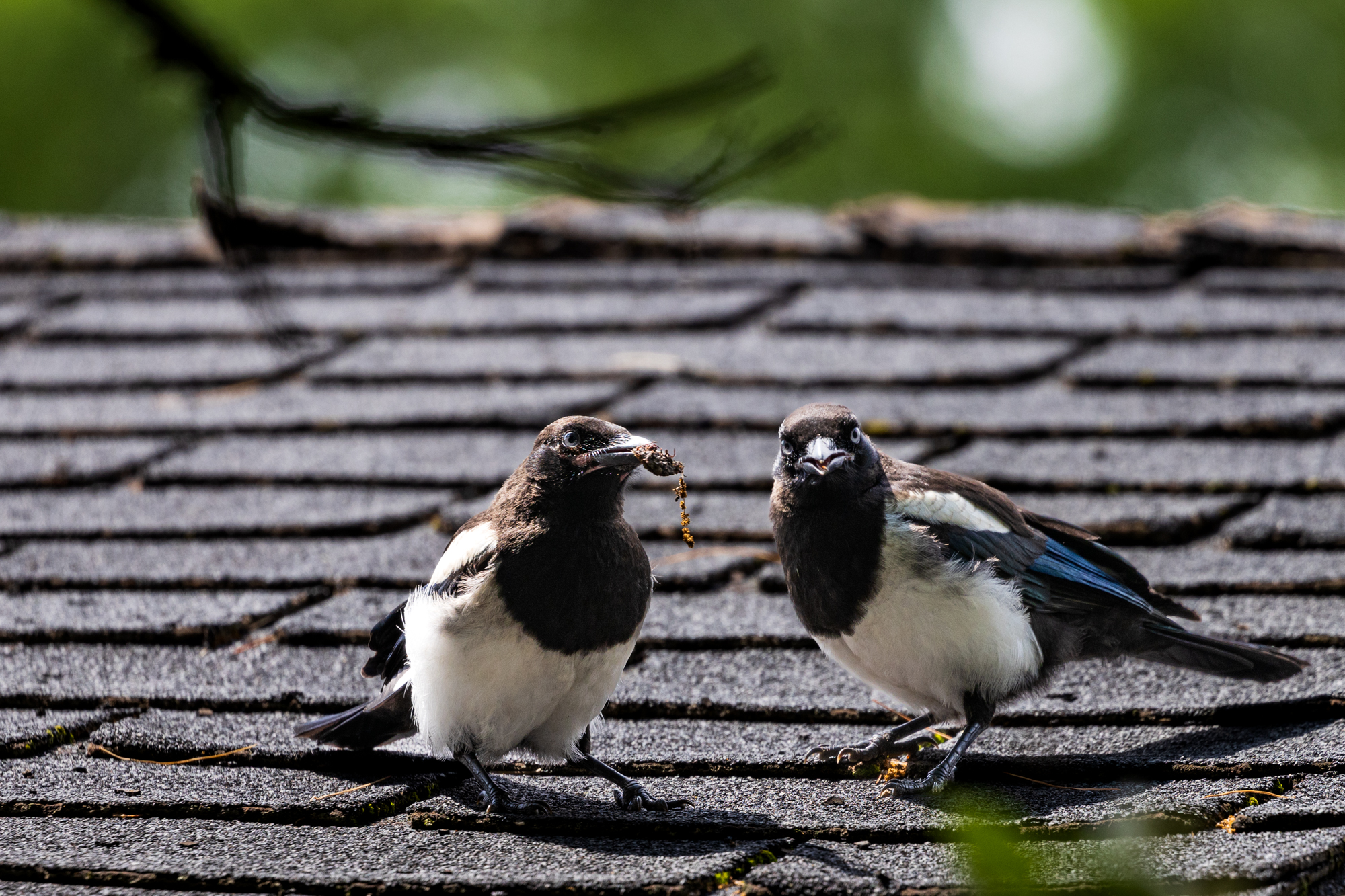
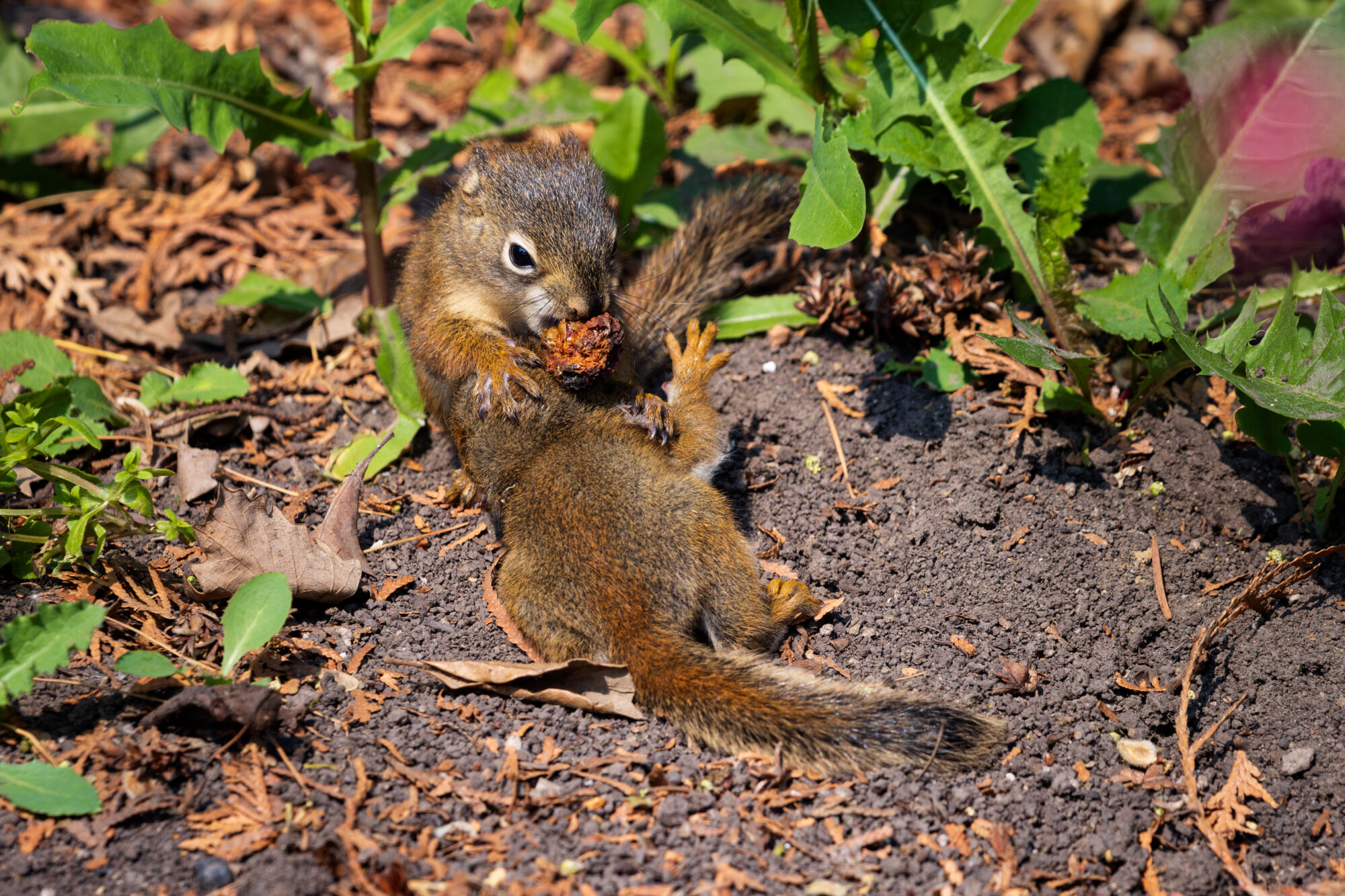
What’s Next: Continuing the Journey
Rewilding is never finished – it’s a continuous unfolding. There is always more to observe, adjust, and imagine.
In the seasons ahead, I plan to:
- Expand the wildlife corridors through our side yards and alley, creating safe passages beyond the backyard.
- Add more water sources and berry-producing plants to support birds and pollinators year-round.
- Transform the front by reducing lawn and exploring a boulevard garden. It’s a high traffic area, so I will need to be mindful of footpaths and soil compaction, but it has potential to be both beautiful and biodiverse.
- Soften patio and vertical spaces with climbing plants and vines, creating microhabitats. Encourage moss to grow over stone blocks and gravel, improving soil health and retaining moisture.
- Install Feather Friendly Window Collision Tape to protect birds.
- Add birdhouses, roosting platforms, and a bug hotel.
- Design and implement seasonal succession in the planting plan so something is always blooming or offering cover – even in the winter.
- Plant pale or white flowers to attract nighttime pollinators, like moths.
- Introduce natural elements – deer antlers, bones, fallen branches and limbs – to mimic canopy fall, support fungi, insects, and small wildlife, and retur organic matter to the soil.
It’s a layered, holistic approach – deepening the complexity and resilience of this space. I’m excited to keep sharing each step along the way.
The Power of One Yard: Sparking a Ripple of Change
Creating a wildlife-friendly habitat wasn’t just a checklist goal – this is my magnum opus, a living, breathing sanctuary. A place where wild things return because space was intentionally made for them. A life’s work in motion, fueled by joy, curiosity, and a conviction that even a single yard can spark real ecological change. I’ve poured countless hours rewilding our little patch of land – transforming a once-conventional yard into a living landscape where native plants bloom, birds gather, pollinators thrive, and the story of wildness takes root. It has been one of the most rewarding projects of my life.
This yard now gives back. It shelters life, strengthens biodiversity, and stands as a quiet node of hope in the urban landscape. One small space can ripple outward, offering food, refuge, and safe passage to wildlife beyond its borders. Every flower, branch, and puddle matters. Every native plant invites life. Every effort builds momentum for a wilder, healthier city.
This is my rebellion against sterile, disconnected landscapes – a reminder that change starts small, one yard at a time. You don’t need acres to make a difference. You don’t need perfection. Start where you are. Plant a native flower. Let the leaves lie. Add a shallow water dish. Watch life return. Your patch of land can be more than a yard – it can be a sanctuary, a classroom, and a spark for the wild.
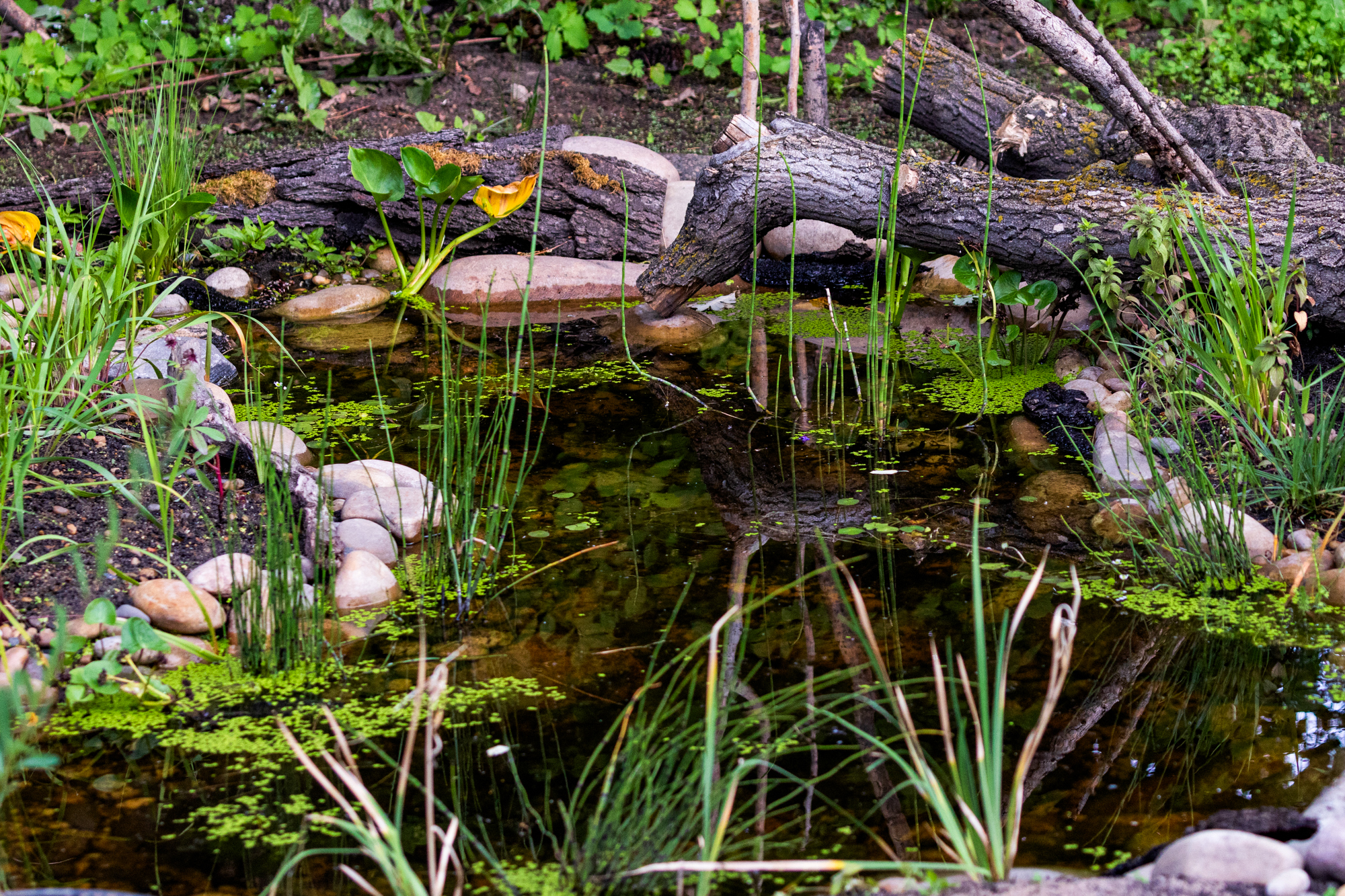
Your Invitation to Rewild
If you feel that pull towards wildness, consider this is your sign. No matter the size of your space – whether a small yard, balcony, planter box, or several acres – you can invite life. Start with what you have. Let it get a little messy. Let it get a little wild. It’s enough. It doesn’t have to be perfect, or big. It just needs to be intentional.
Here are a few simple ways to begin:
- Turn off unnecessary outdoor lights at night during spring and fall migration – this helps prevent disorienting birds on their journeys.
- Plant early and late blooming native flowers: Prairie Crocus (Pulsatilla nuttalliana) provides nectar and pollen for early pollinators, while Canada Goldenrod (Solidago canadensis) offers late-season nectar for adult butterflies and other pollinators.
- Add a shallow water dish with pebbles to support pollinators.
- Leave seed heads and stems standing through winter for birds and insects.
Every little step counts. Start today, welcome nature in, and watch your urban yard transform into a thriving little wild sanctuary. By planting native plants, encouraging pollinators, and creating space for birds, insects, and small mammals, you can make a meaningful difference – even in the heart of the city.
Thank you for following along. If you’ve been thinking about rewilding your space, consider this your sign: let it be wild. Let it be enough. Let it begin.
If this post sparked an idea or made you pause to notice the beauty in your own space, I would be so grateful if you shared it with a friend, on your social media, or saved it for later. Every share helps this little patch of land inspire more backyard birders, native plant gardeners, and nature-lovers.
Thanks for reading! Until next time,
Tracey
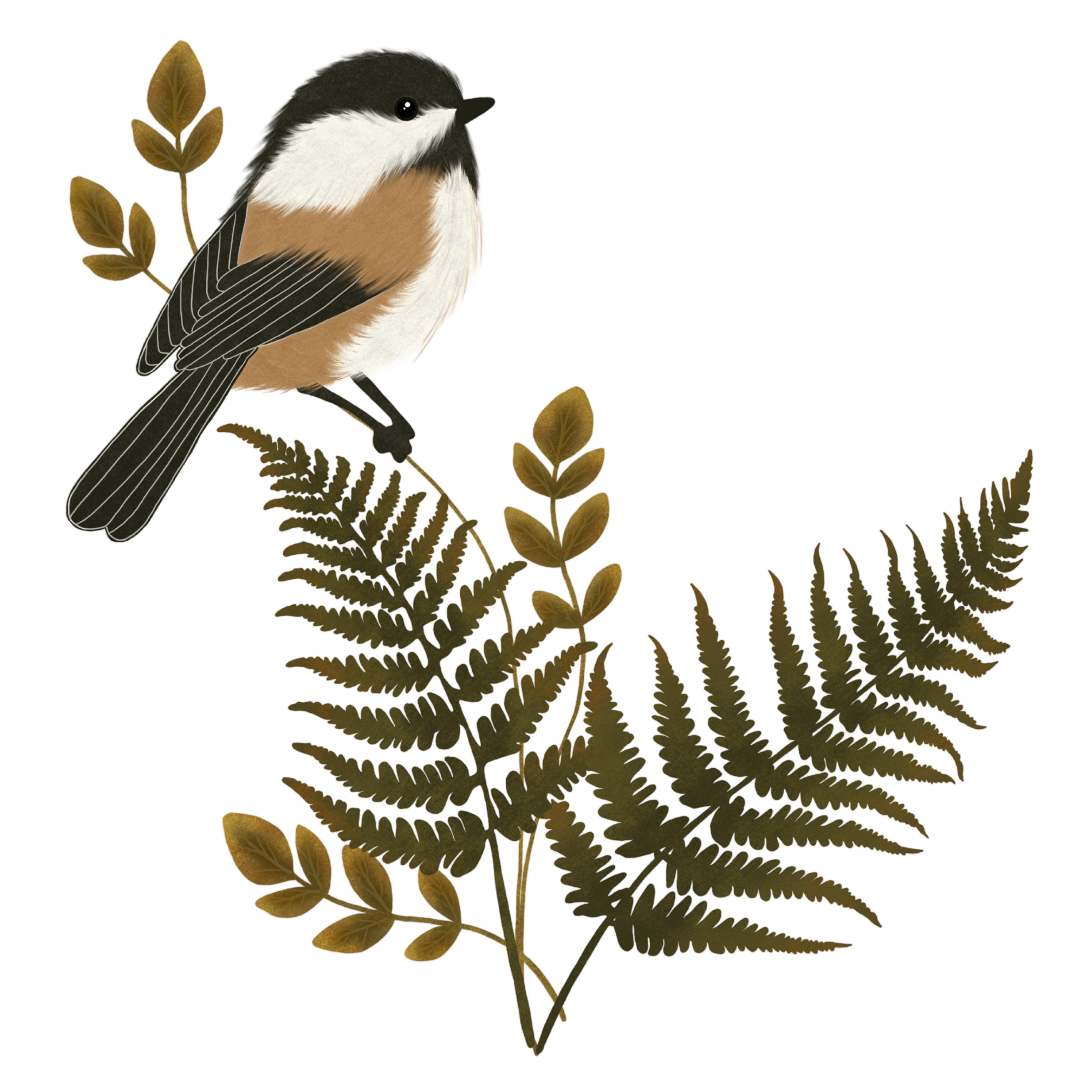
INFORMATION
🌱 A note on plant names 🌱
You’ll see both Latin (scientific) and common names here. Common names change depending on the region – what is called “Prairie rose” in one place might be something else in another. Latin names stay consistent worldwide and help avoid mix-ups, while common names keep things familiar and approachable. I use both so you can easily identify the plants, no matter what name you know them by.
If you enjoy what I share and want to support my journey to rewild and document this little patch of land, you can do so through my Ko-fi page. Your support helps me continue photographing, nurturing, and sharing this space with you.
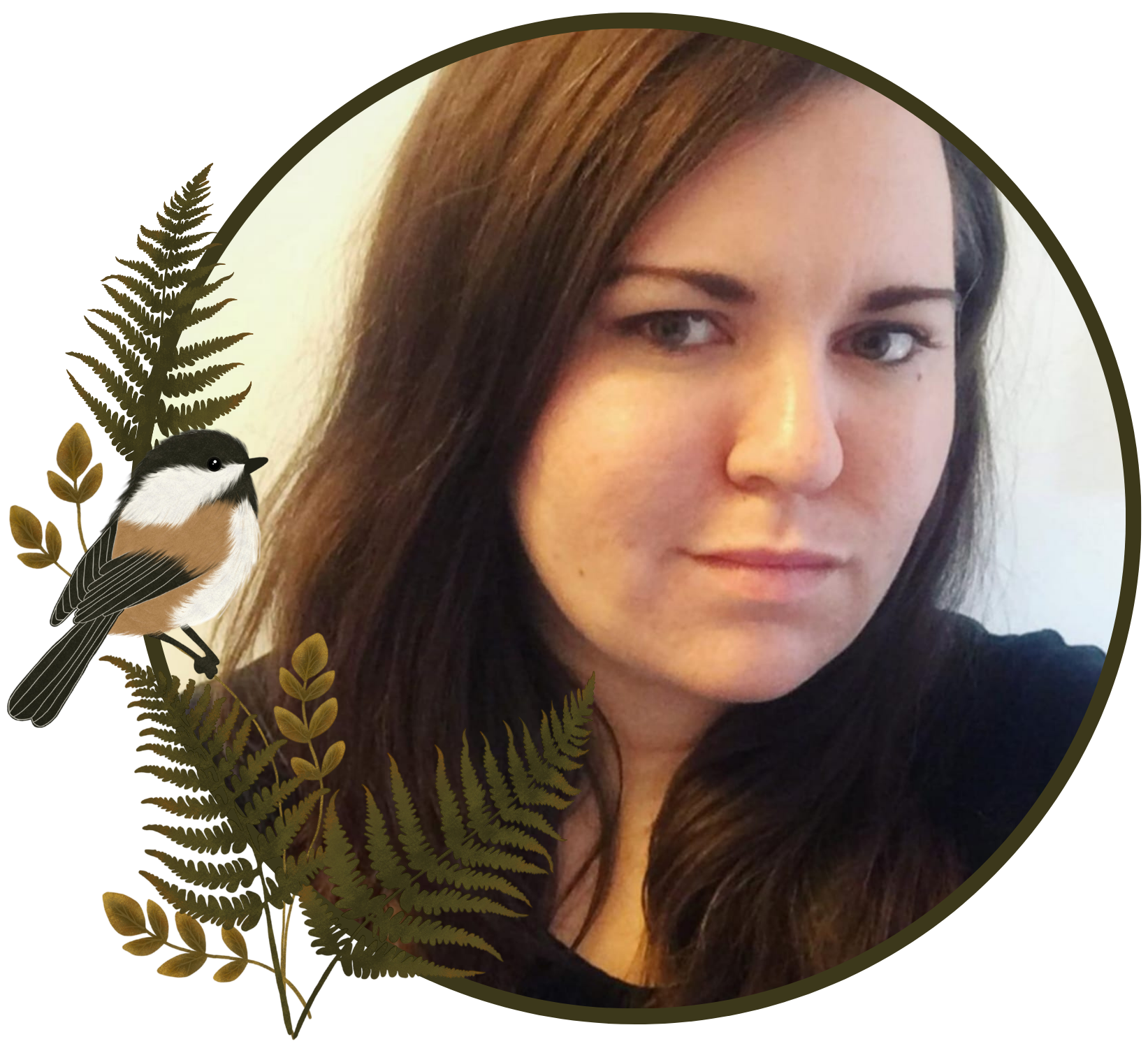
Tracey | Home & Habitat Journal
A birdwatching, plant-loving, thrift-hunting homebody crafting a space where comfort and nature live side by side.
HomeAndHabitatJournal.com
Where cozy living meets wild spaces—this is home, shaped by nature. From backyard birds to native blooms, wildlife habitats to cozy corners. Join me on this journey, and connect with me on social media to let nature inspire your space too!
PIN IT!

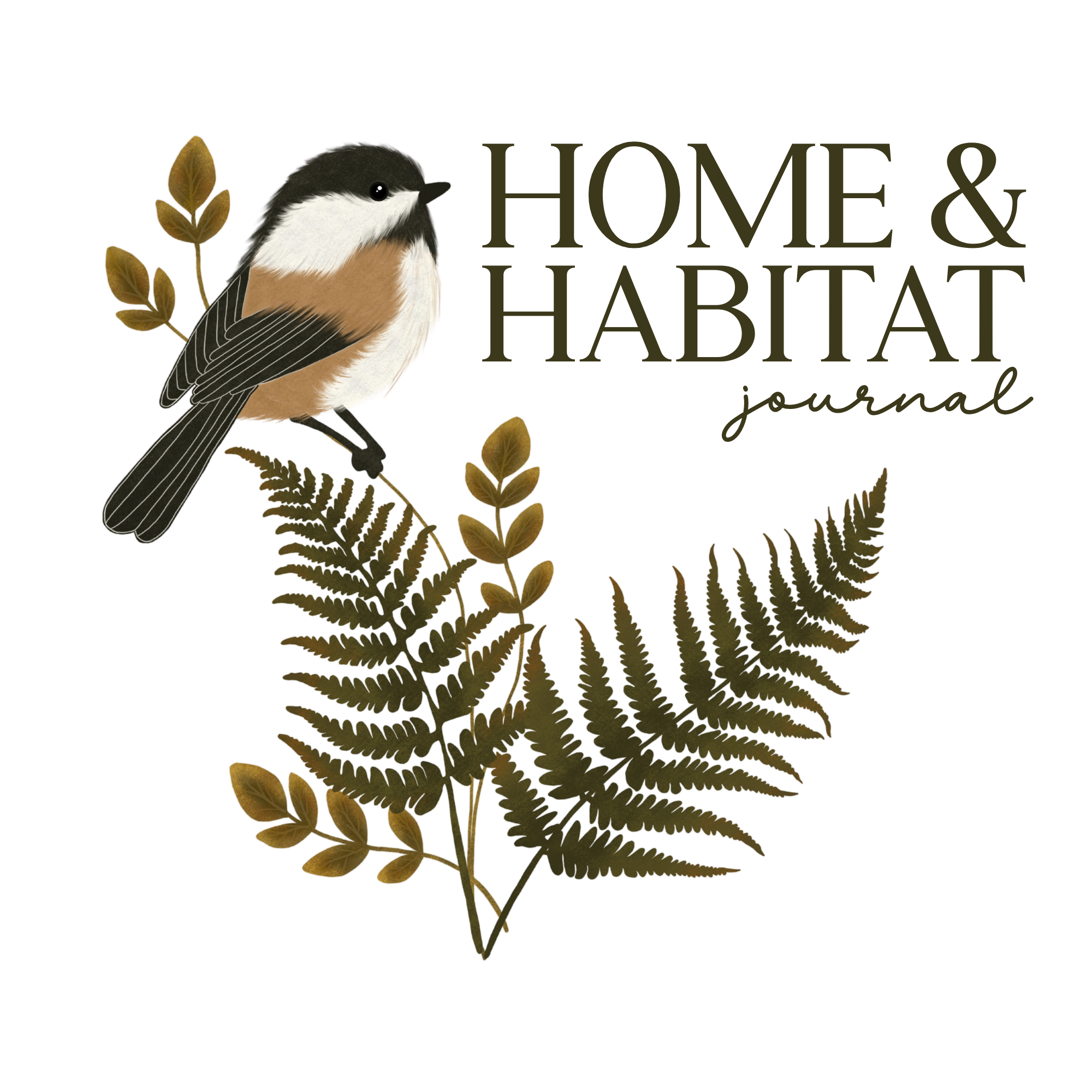
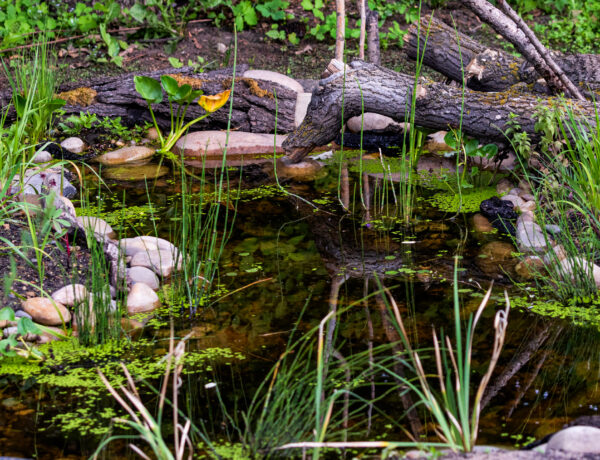
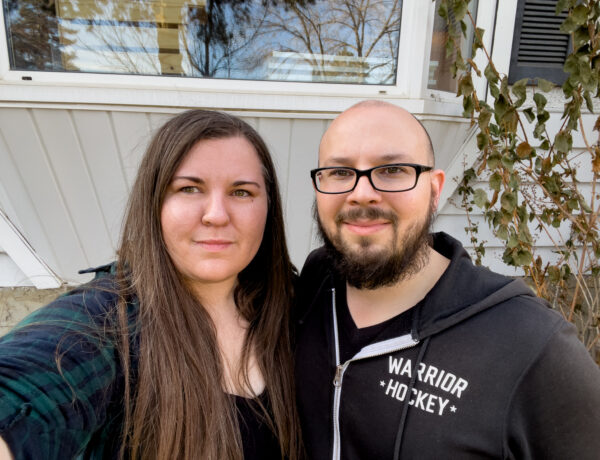

No Comments